
Conservation of Biodiversity
Morioka Seiko Instruments Inc.
"Morioka Seiko Instruments Inc (hereinafter Morioka Seiko) was established in 1970 in Shizukuishi-cho, Iwate, as a watch manufacturing plant of the Seiko Group.
Shizukuishi is surrounded by mountains, water ways, greenery, and hot springs.
We do business in this blessed natural environment while coexisting with nature."
2022Aug
August 10, 2022: Opening of Waku-Waku (Exciting) Biotope
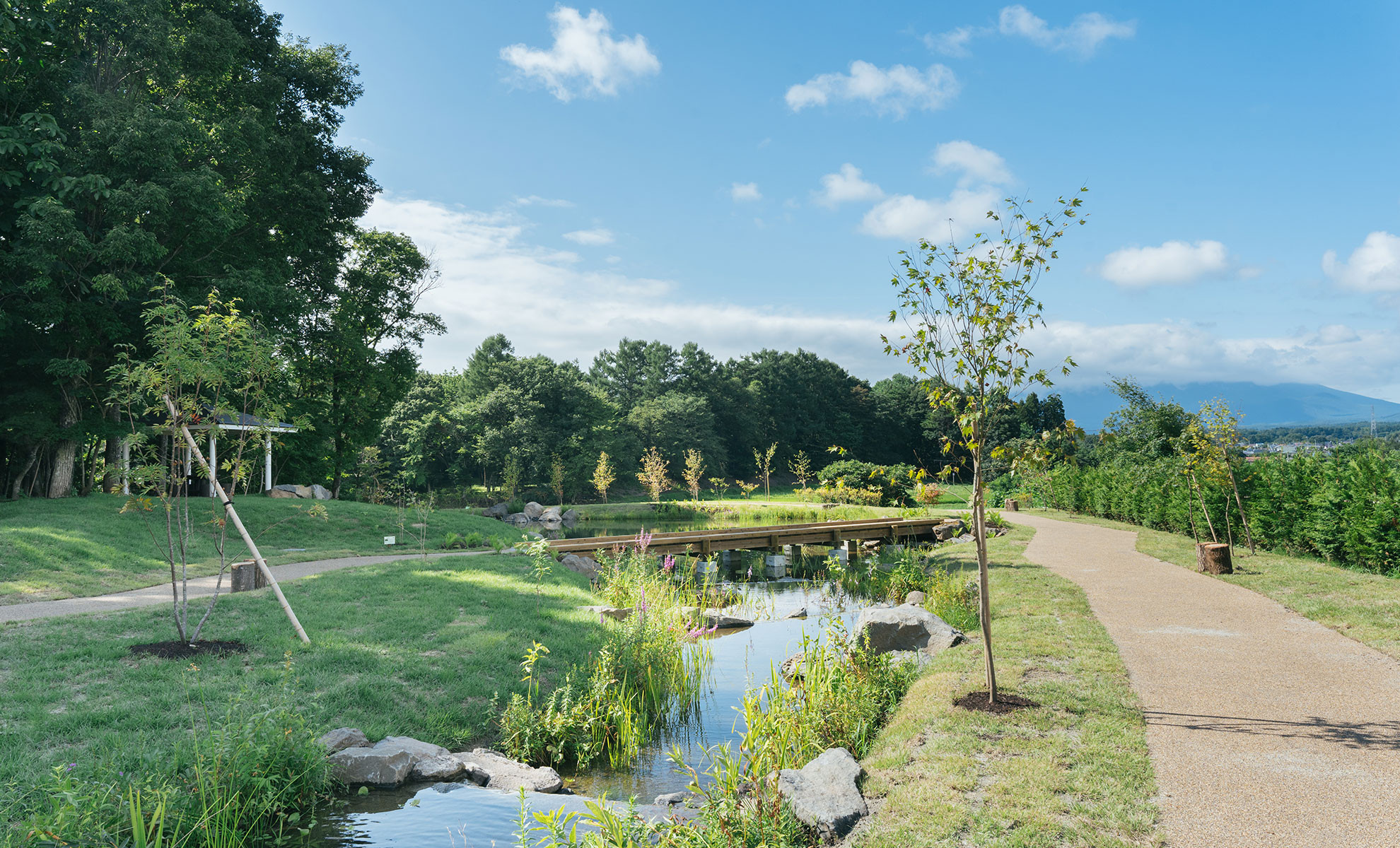
We opened a waterside biotope* called Waku-Waku (Exciting) Biotope on the company premises. The creation of a waterside ecosystem that has never existed within the premises is expected to further improve biodiversity. In addition, Waku-Waku Biotope has a natural water purification mechanism and can maintain water quality while circulating water resources using rainwater from the factory as a water source. In the future, we aim to establish the local rare species of tanago (Japanese bitterling) fish and fireflies, which are synonymous with clean waterside environments. Tadpoles and loaches, which have been waiting impatiently for a waterside habitat, are now swimming around happily in this new environment.
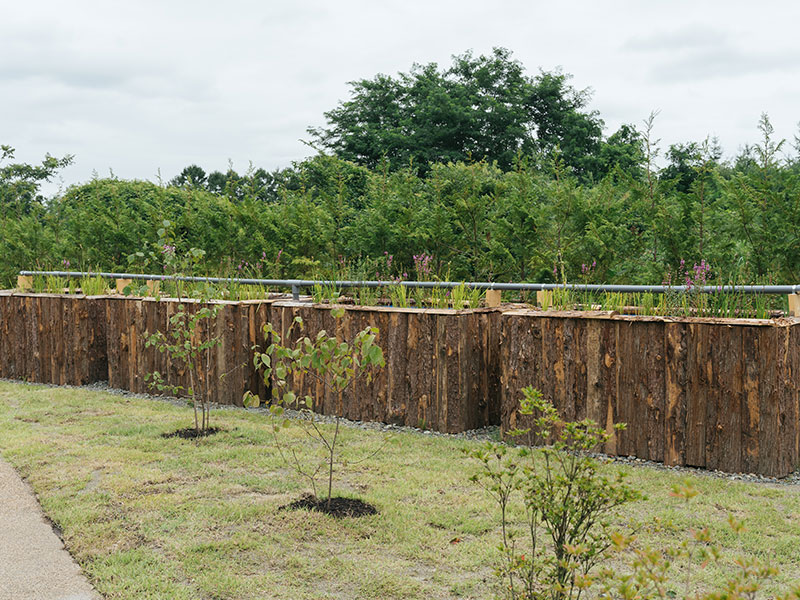
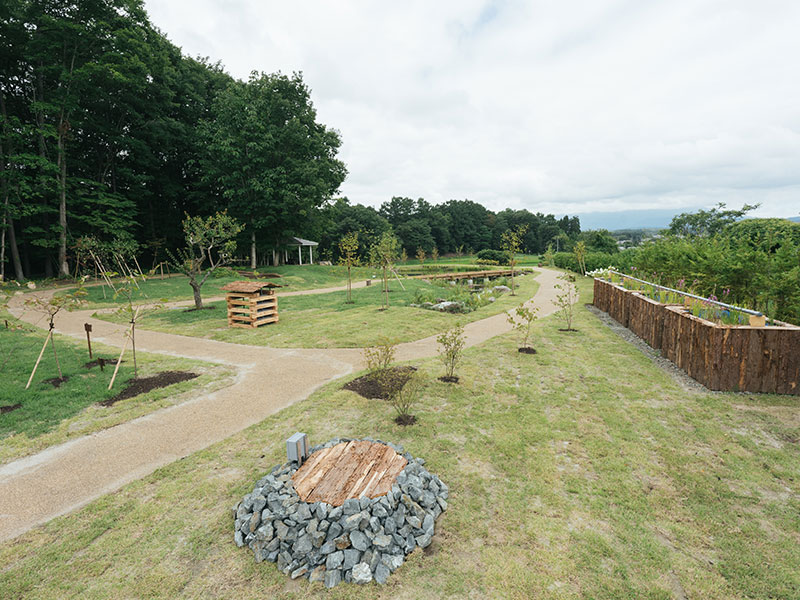
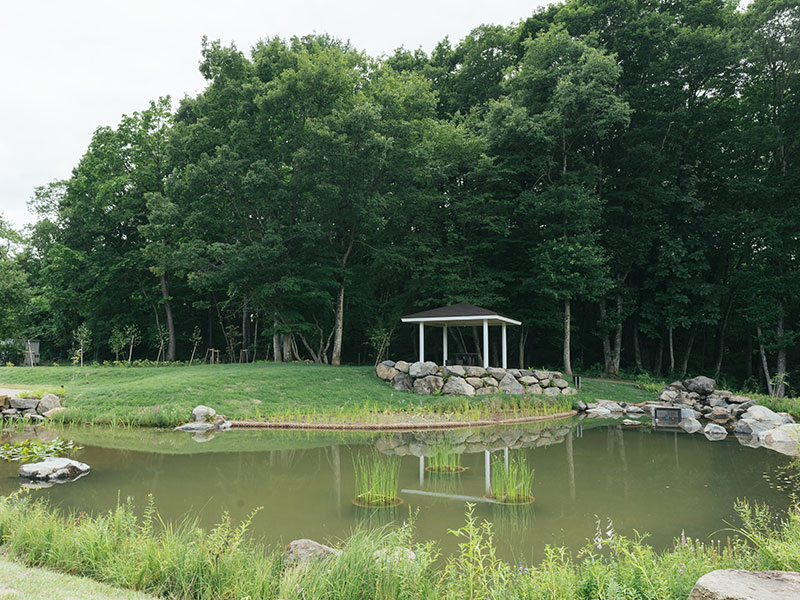
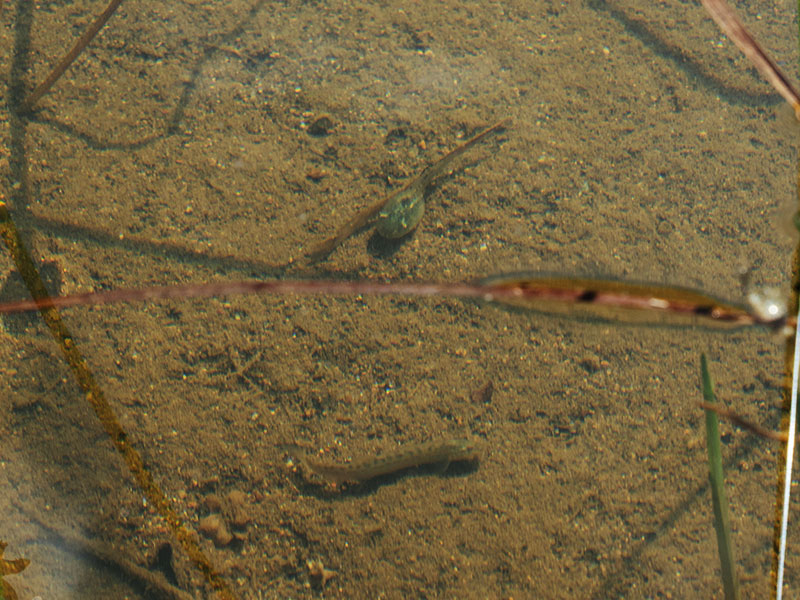
*Biotope: A term that combines “bio” (living organisms/life) and “tope” (space/place), and refers to a space in which the habitat of living organisms has been artificially restored to a state close to its natural conditions.
2022Feb
February 1, 2022: We held a nature observation event to survey the animals living in Waku-Waku (Exciting) Forest.
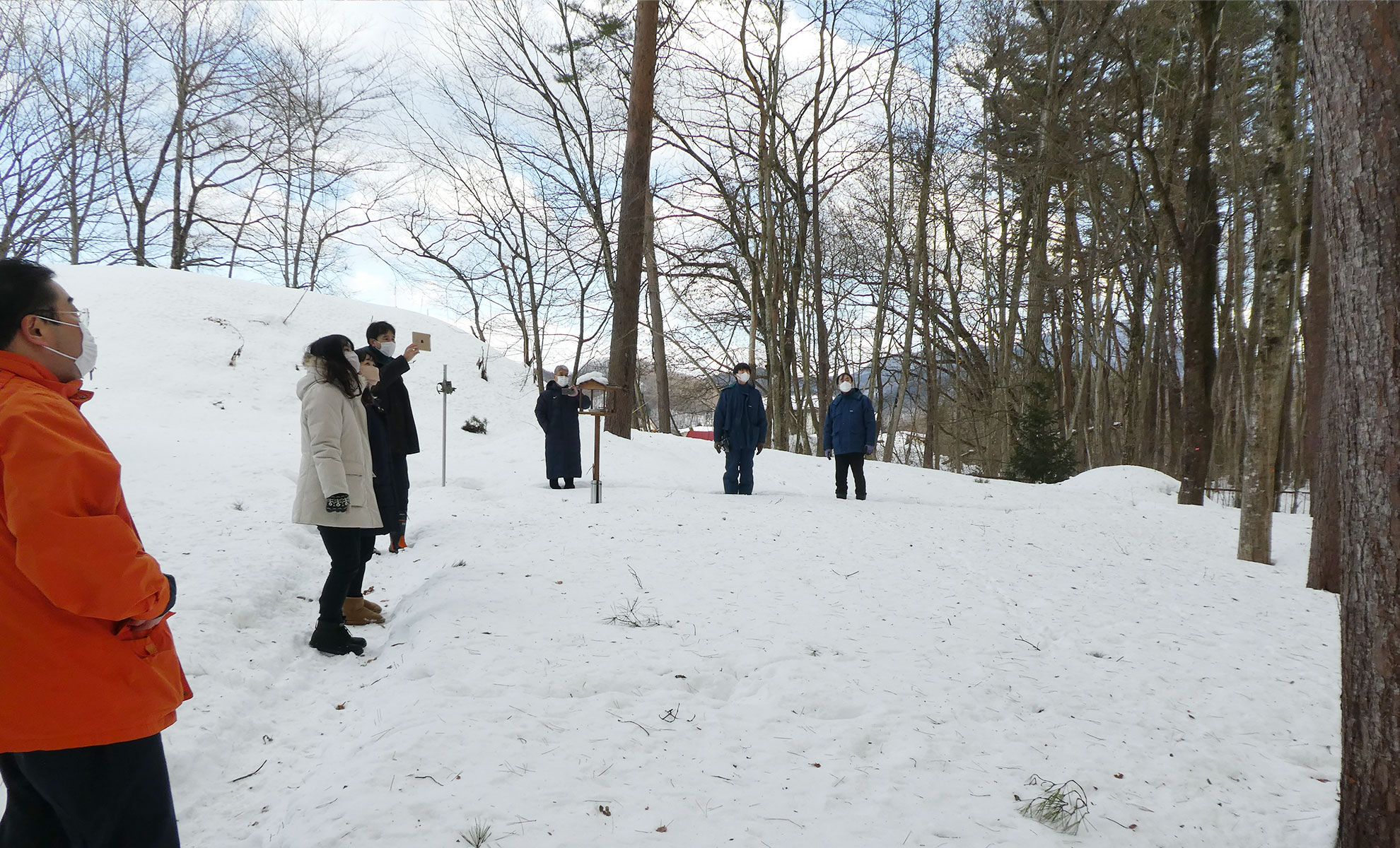
For the first time in 10 years the event was held in winter. We learned how to do animal tracking*1 in a snow-covered forest and experienced what it is like to do nature surveying in snow country.
Via trophy cams (motion-activated automatic cameras) that have been used to photograph animals for the past two years, we also confirmed that many wild animals such as squirrels, raccoon dogs, rabbits, and serows are visiting the Waku-Waku (Exciting) Forest.
As we continue our biodiversity conservation activities, the frequency of animal sightings is definitely increasing. It was explained that this is likely because the habitat of the animals has been improved through these activities, and that the animals do not regard us as a threat. It was a joy to hear that our relationship with the forest creatures is developing.
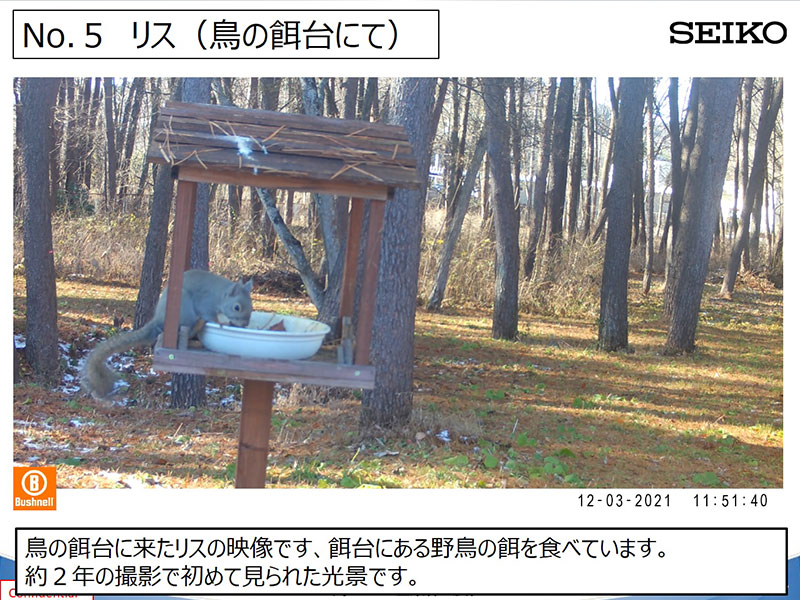
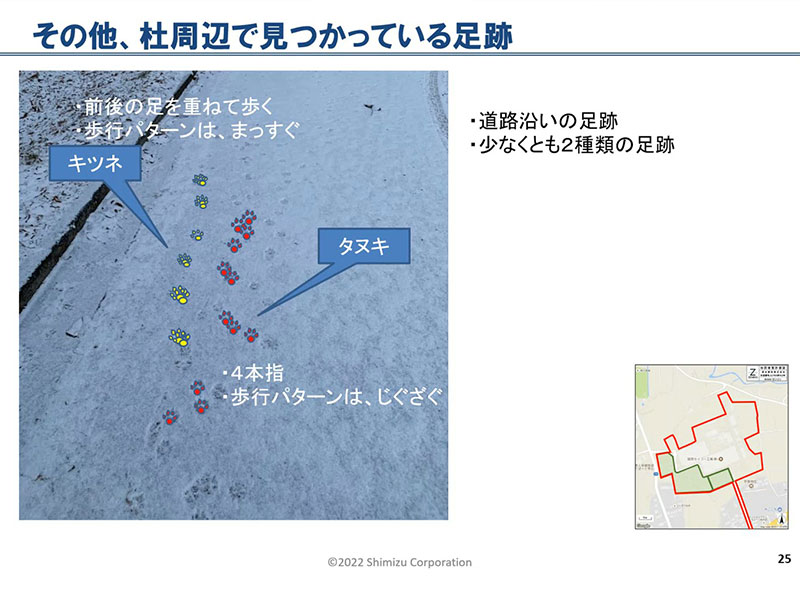
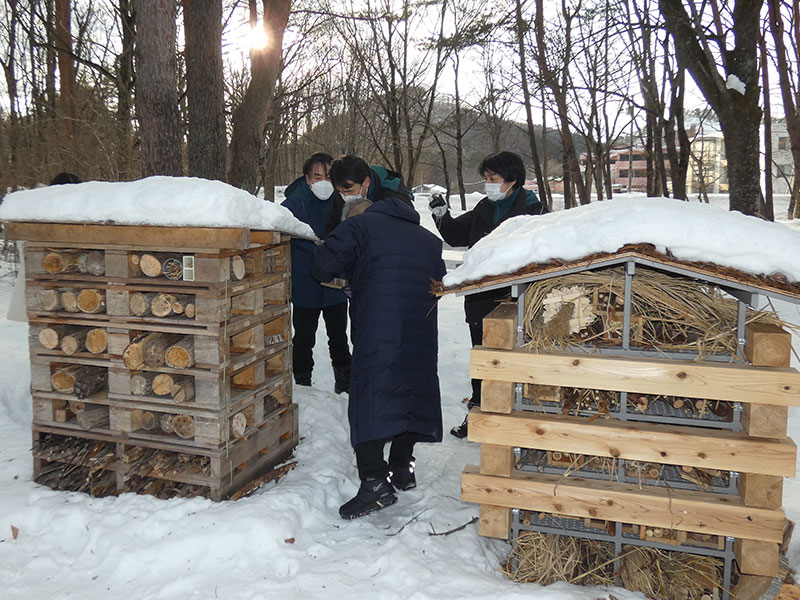
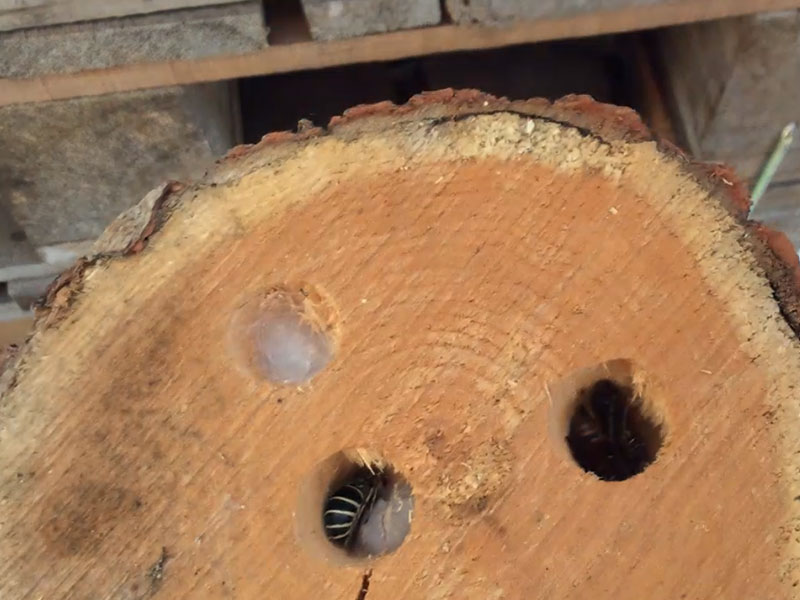
*1 Animal tracking: A method of exploring ecology from animal tracks.
*2 Identification: Determining the taxonomic categories and species names of organisms. In this case, the names of animals, etc. are specified.
2021Nov
November 8, 2021: Conclusion of the Corporate Forestation agreement with Iwate Prefecture and Shizukuishi Town
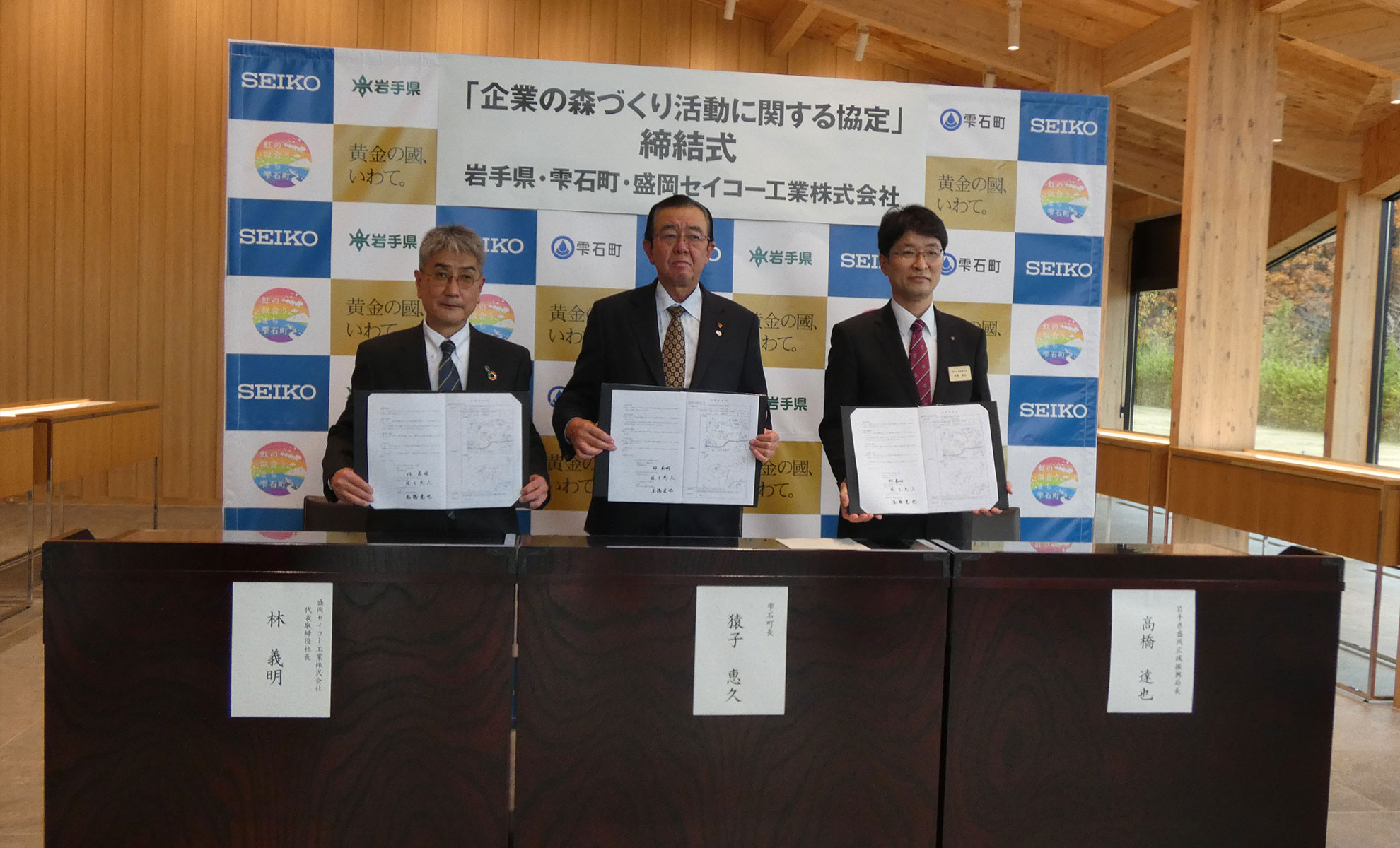
We agreed to the forest maintenance initiatives being promoted by Iwate Prefecture, the Corporate Forestation initiatives, and signed an agreement for the three parties to collaborate on these activities.
Going forward, we will use the Nanatsu-mori forest in Shizukuishi Town as our field of activity for efforts in the conservation of local biodiversity.
We carried out thinning*1 work on February 3, 2022, and pruning*2 work on March 24, 2022.
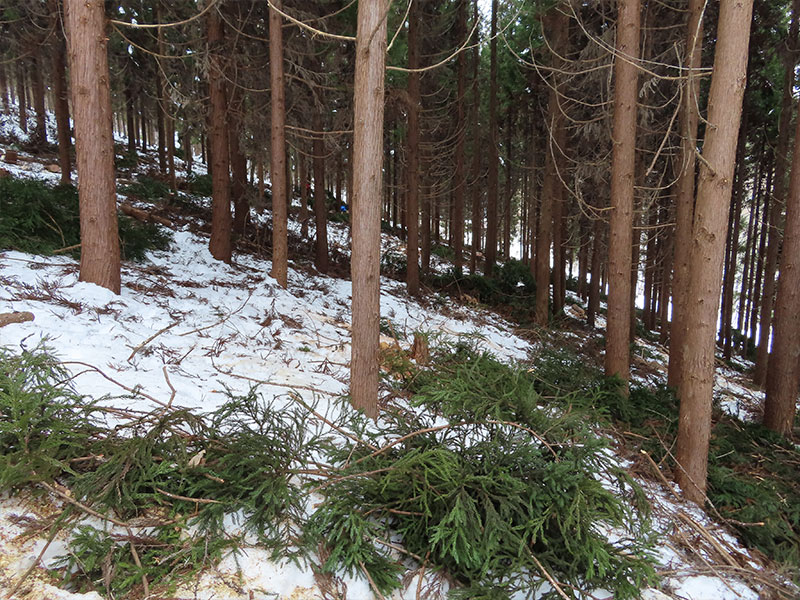
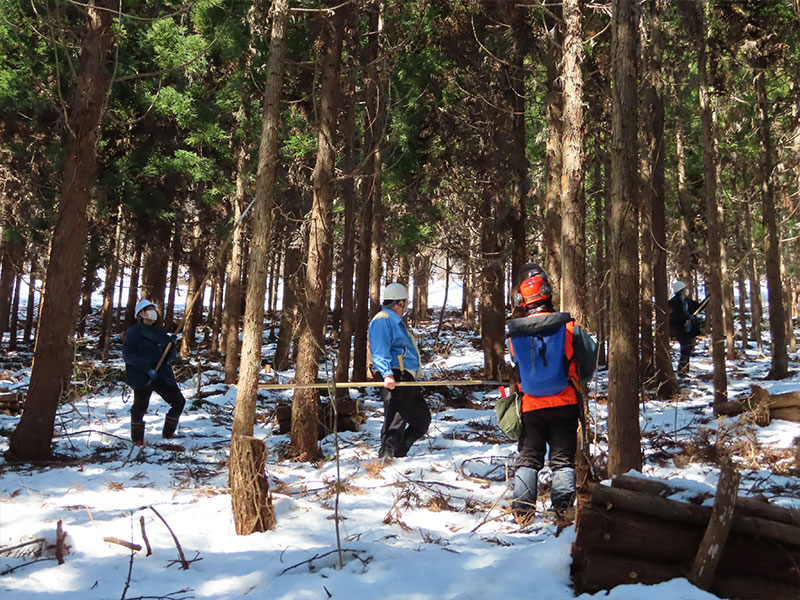
*1 Thinning: A type of forest maintenance method. To prevent the forest from becoming overgrown, the forest is thinned out by cutting down some trees.
*2 Pruning (branch cutting): The work of cutting excess or dead branches from trees one by one using a machete, axe, or saw.
2021Nov
November 6, 2021: We held the Seiko Exciting Environment School.
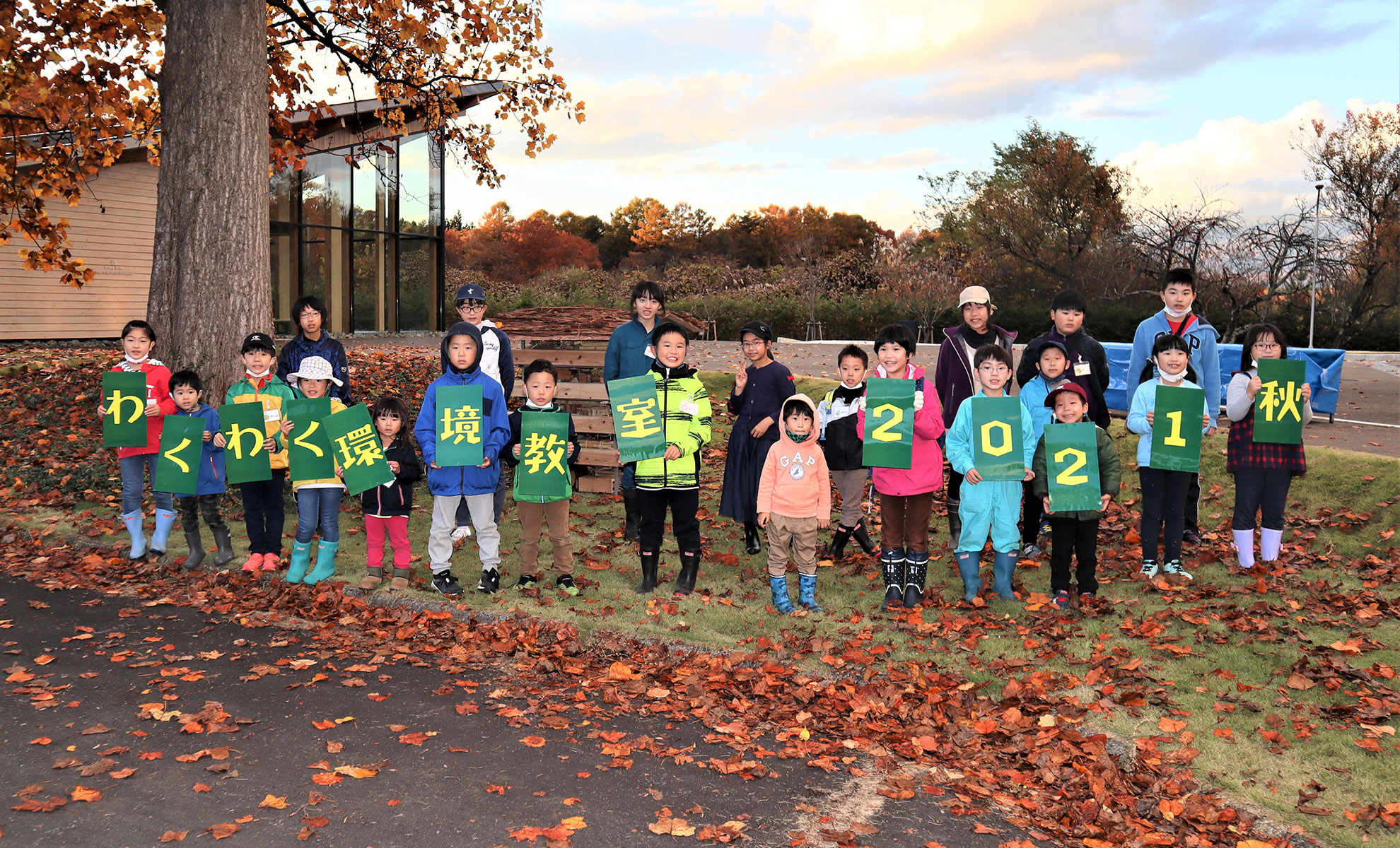
For the first time, we held the Seiko Exciting Environment School for learning the importance of biodiversity conservation through activities such as building “insect hotels” and interacting with nature.
First, our employees became teachers and explained the importance of the SDGs and biodiversity to the participants. Next, we played a field bingo game in which we searched for objects with specified shapes and textures in the forest.
And finally, we built insect hotels. The participants imagined what kinds of insects they wanted to come to these insect hotels, and completed the structures by creating various rooms of their own designs.
Imagining what rooms insects and other animals might like is to consider the optimal environments for living creatures, which is the basic idea behind biodiversity conservation. We want to continue holding the Seiko Exciting Environment School in the hope that it will spark an interest in the environment among children.
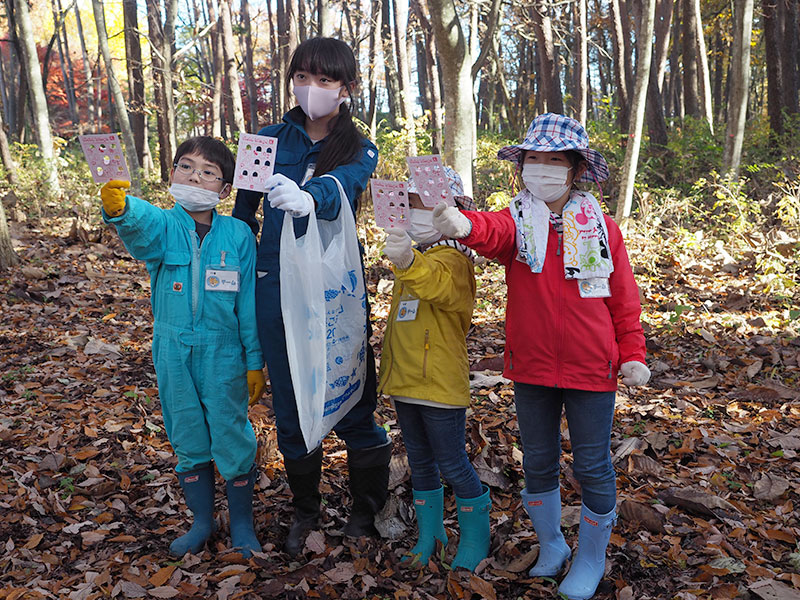
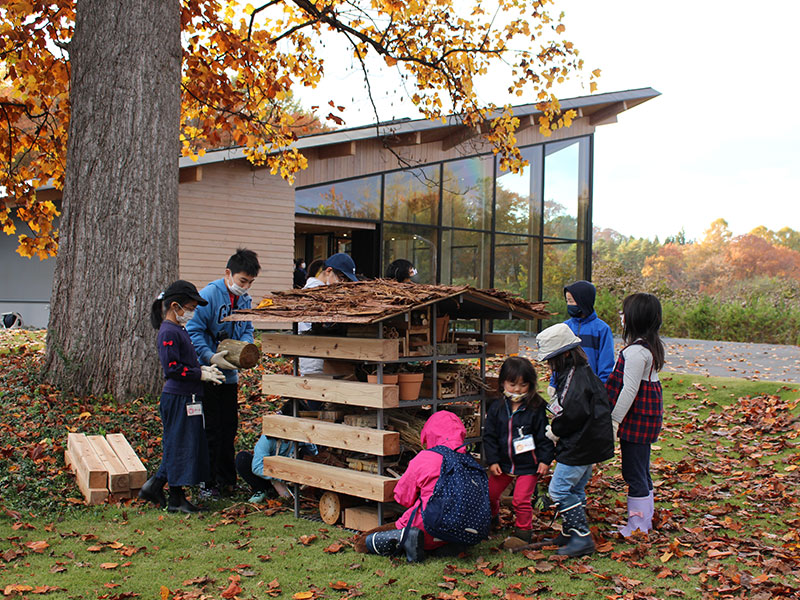
2020Oct
October 12, 2020: We took on the challenge of holding a remote nature observation event. We learned bird watching and built nesting boxes.
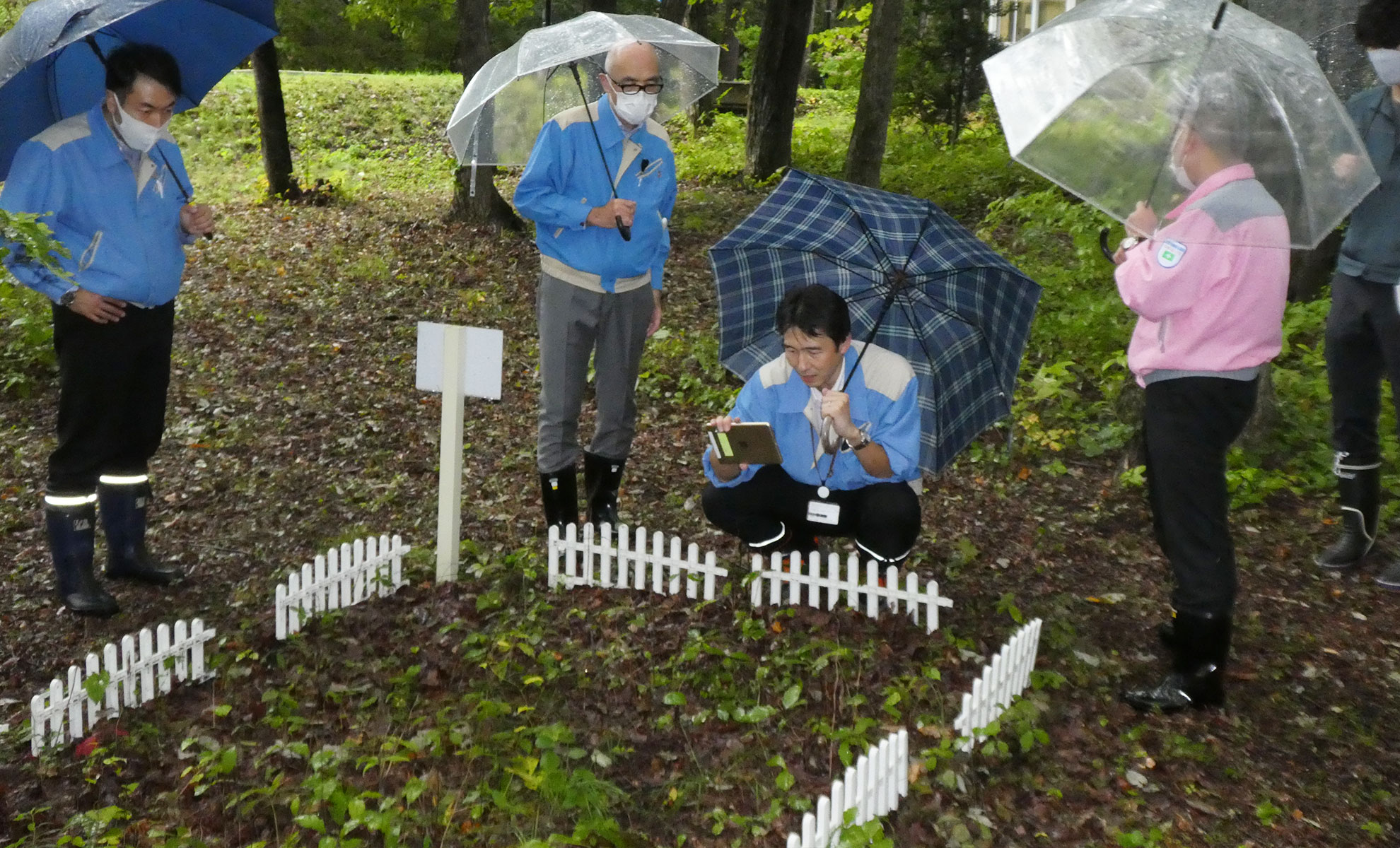
Due to the COVID-19 pandemic, we took on the almost unprecedented challenge of holding a remote nature observation event.
We learned that each wild bird has its own characteristics not only in its appearance and calls, but also in the way it flies. We also learned that it is easy to identify a bird by combining other information such as the time and place of observation.
Next, we built nesting boxes. When building a nesting box, it is important to consider the ecology and size of the birds that you are building it for, and choose the right form. Until then, the nesting boxes that were set up in the forest were of a very typical design of birdhouse that is made for the titmouse. This time, we made nesting boxes in designs that we had never seen before, including large boxes for owls and boxes with wide entrances for narcissus flycatchers.
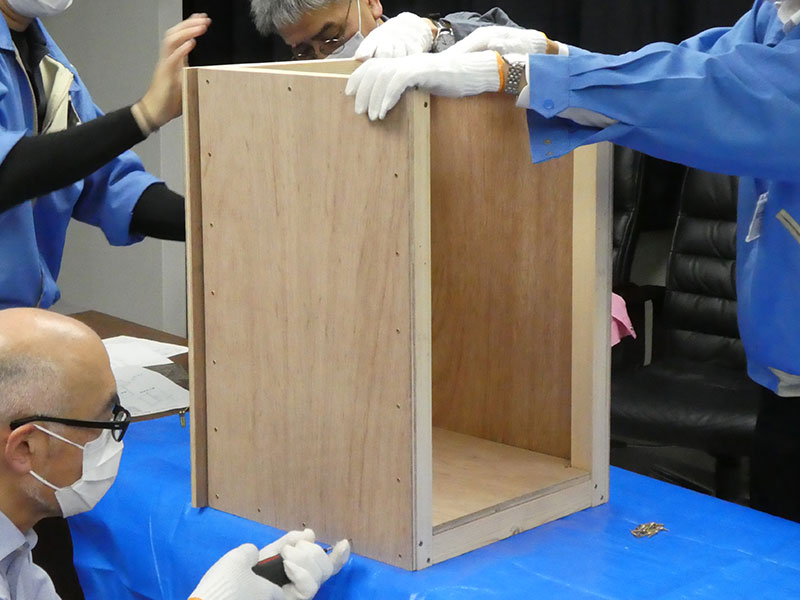
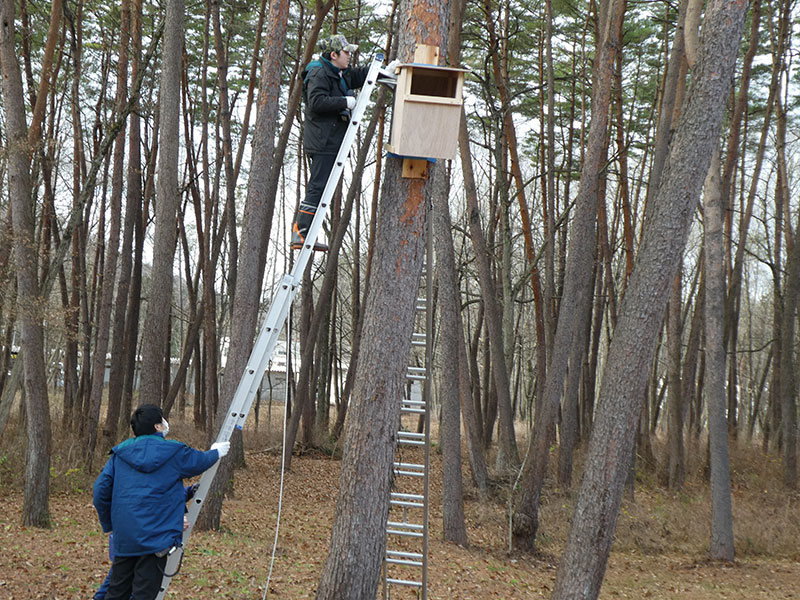
2019Oct
We received the "Chairman's Award for Urban Greenery" at the 39th Green City Award October 2019.
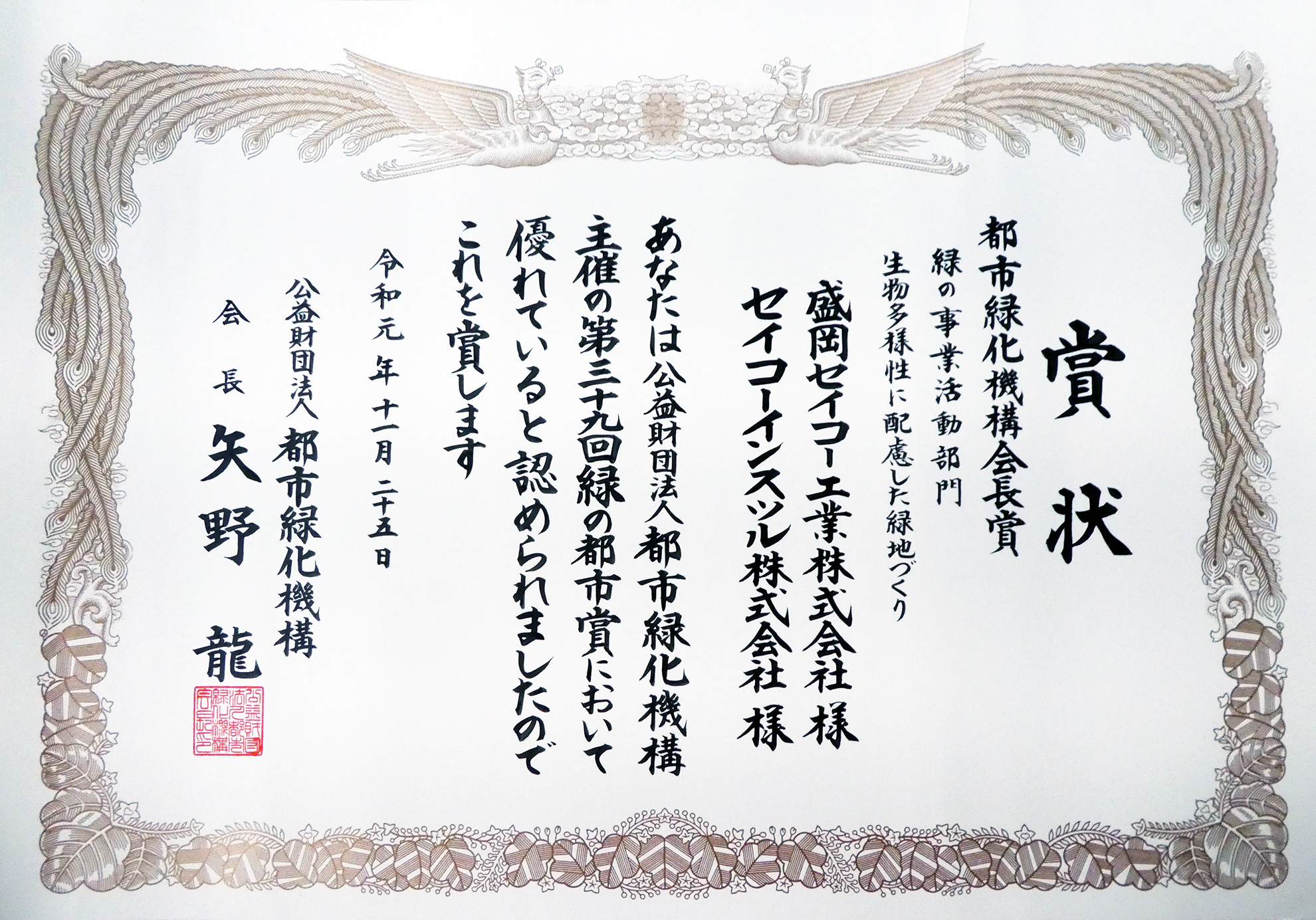
We received the "Chairman's Award for Urban Greenery" during the "39th Green City Award Recognition" sponsored by the Organization for Landscape and Urban Green Infrastructure. The reason why we received this award this time is that the green space has changed similar to that of Satoyama. As a result of these improvements and appropriate maintenance to improve the quality of the green spaces, the consideration of biodiversity with the guidance of external experts has placed a great need for communication between employees, their families and the community. This award is a great honor because it is the result of our previous efforts to conserve biodiversity.
We attended the award ceremony held with the presence of Princess Mako of Akishino and received the certificate of merit at the Meiji Memorial Hall (Minato-ku, Tokyo), on November 25th.
https://www.sii.co.jp/eco/pickup/urbangreen.html
≪Green City Aword≫
The Green City Award recognizes civic groups and companies that have achieved outstanding results in green conservation and creation activities, as well as public organizations, with the aim of creating a city and town that is rich in greenery tomorrow. It was founded in 1981 with the aim of promoting greening and creating a comfortable and earth-friendly living environment by preserving greenery.
≪Announcement from the Urban Greening Organization Chairman's Award ≫
https://urbangreen.or.jp/info-grant/3hyosho/3toshisho/191017_press_toshinomidori3hyosho
2019May
May 29, 2019: We considered the relationship between SDGs and biodiversity.
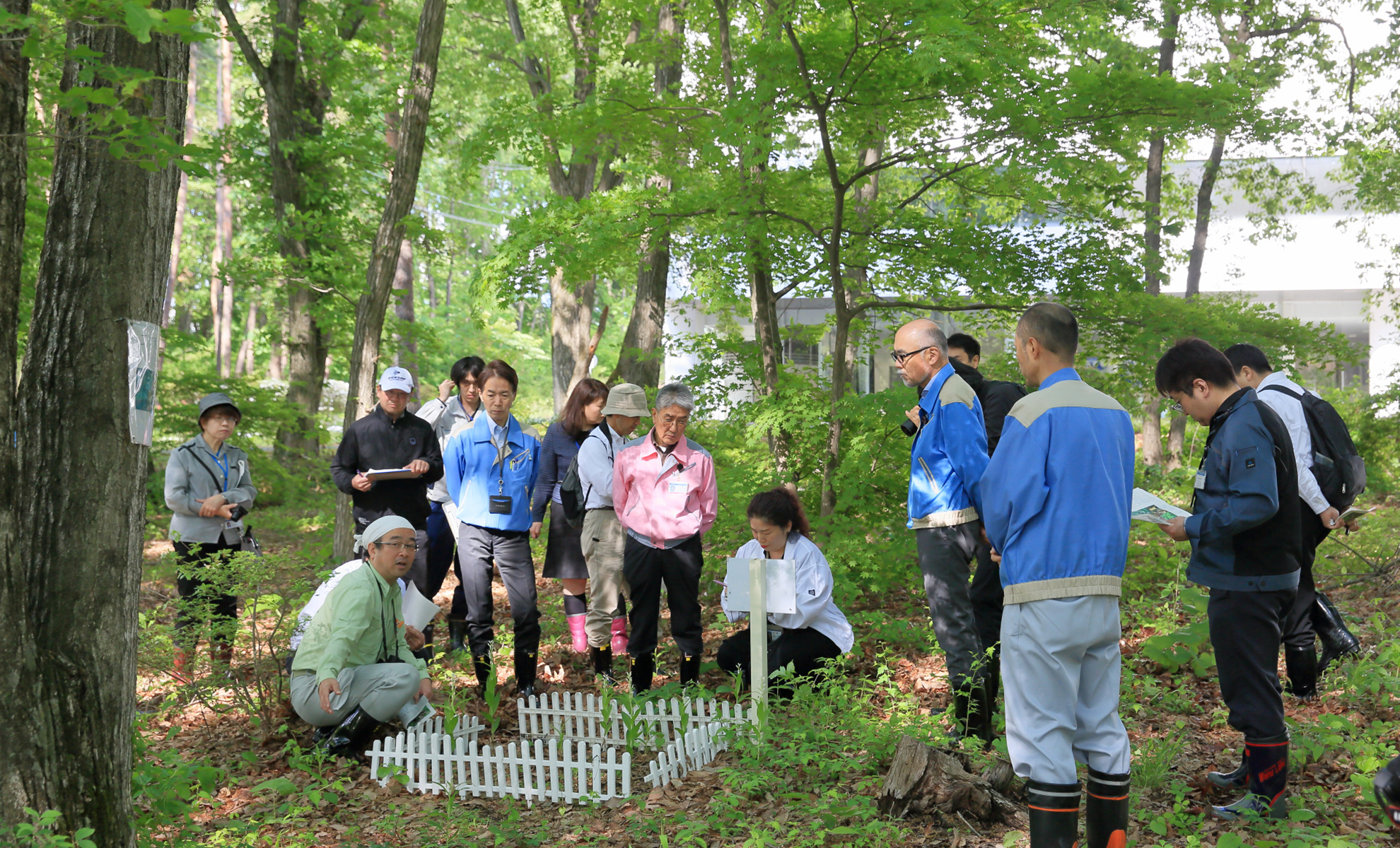
SDGs (Sustainable Development Goals), which are common goals of the international community. A nature observation event was held with the theme of these SDGs at this time. We learned that many of the 17 goals of the SDGs are related to biodiversity conservation activities, and that many of our activities can contribute to the achievement of the SDGs on the day of the event.
They also introduced the evaluation results using a tool that quantitatively evaluates the value of green areas (especially forest areas) against the background that biodiversity (natural capital) is the basis for achieving the SDGs.
We adopted a game format and observed spring plants at the outdoor nature observation event at the outdoor nature observation event. The observation while stepping on the fluffy carpet of fallen leaves was very pleasant, and many plants could be seen. Experts praised the fact that the nature trail was created by devising the weeding.
This time, we had the participation of the government for the first time, and deepened our communication with the community
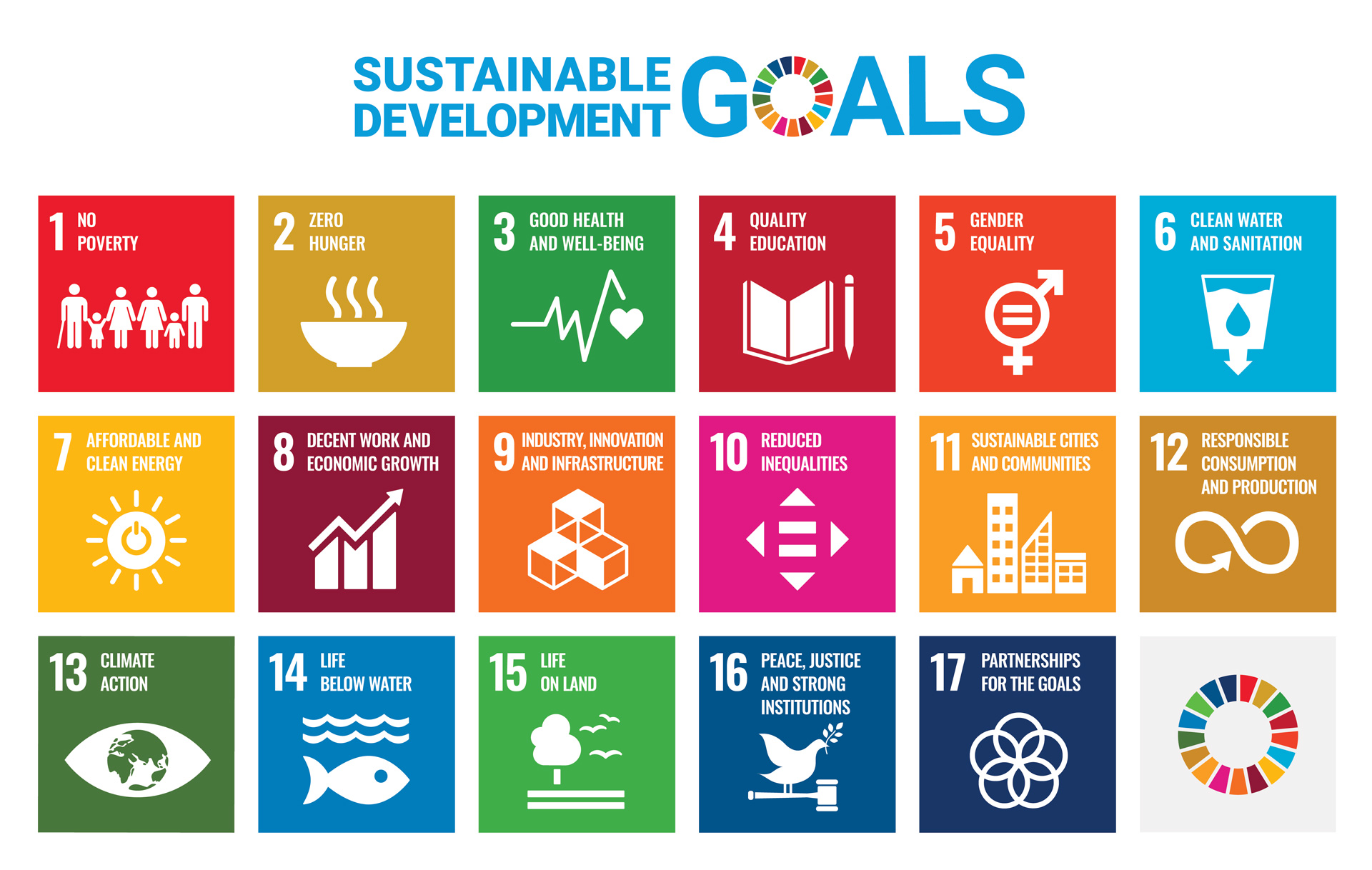
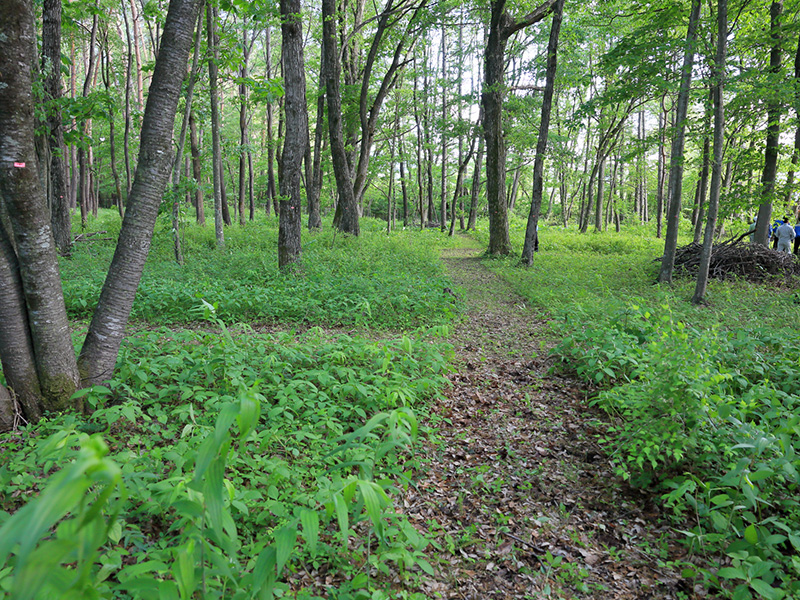
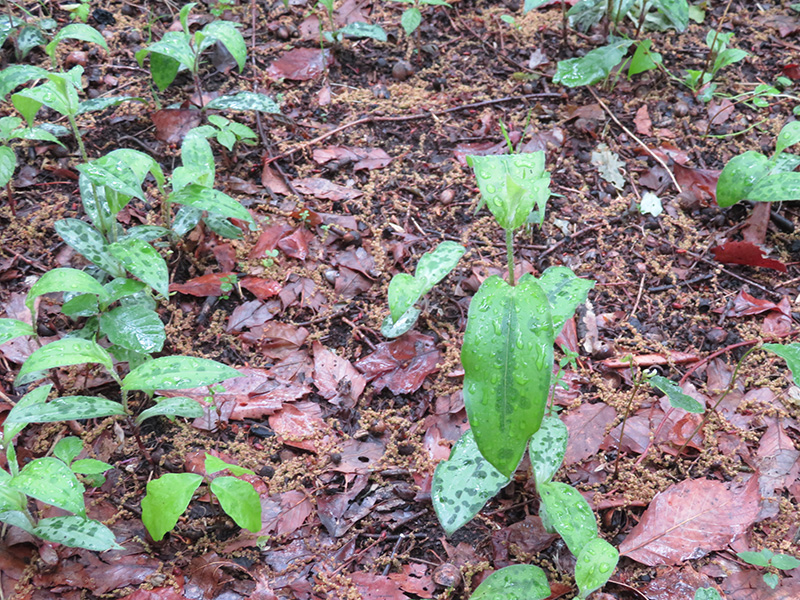
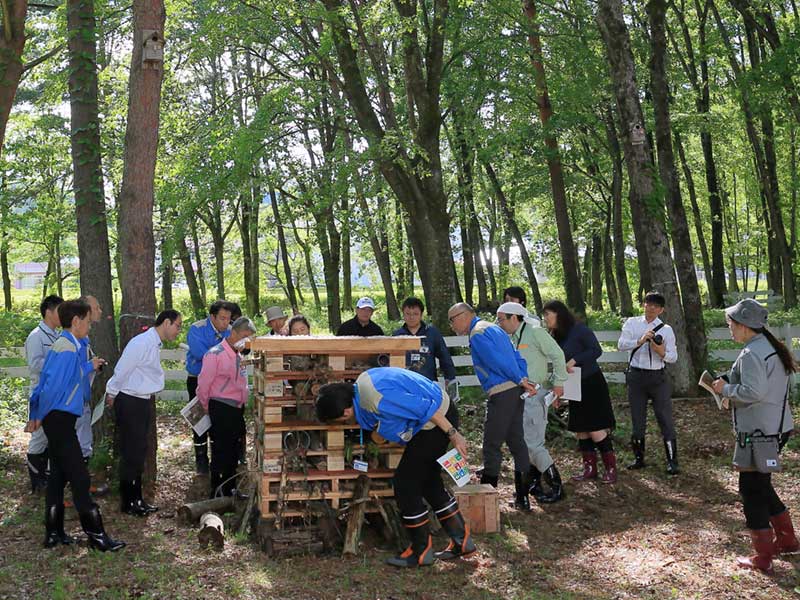
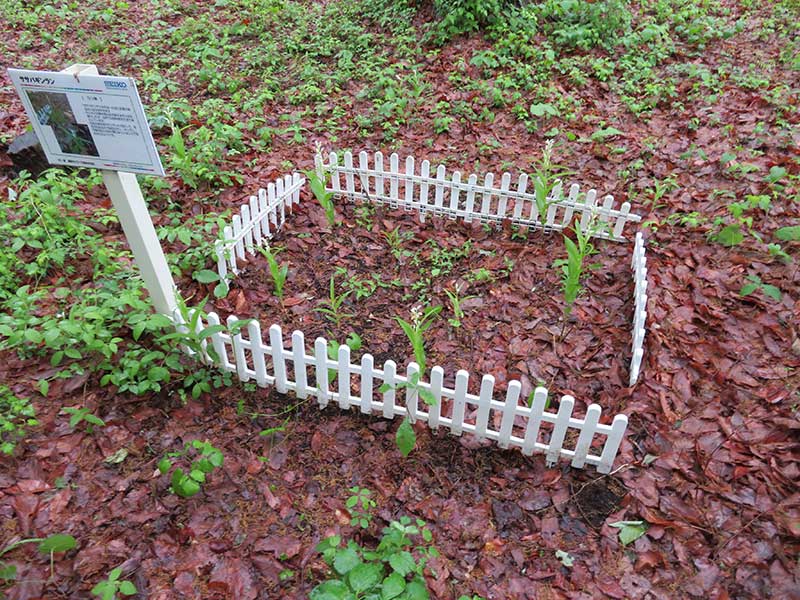
2019May
May 18, 2019: We participated in The Green Wave 2019.
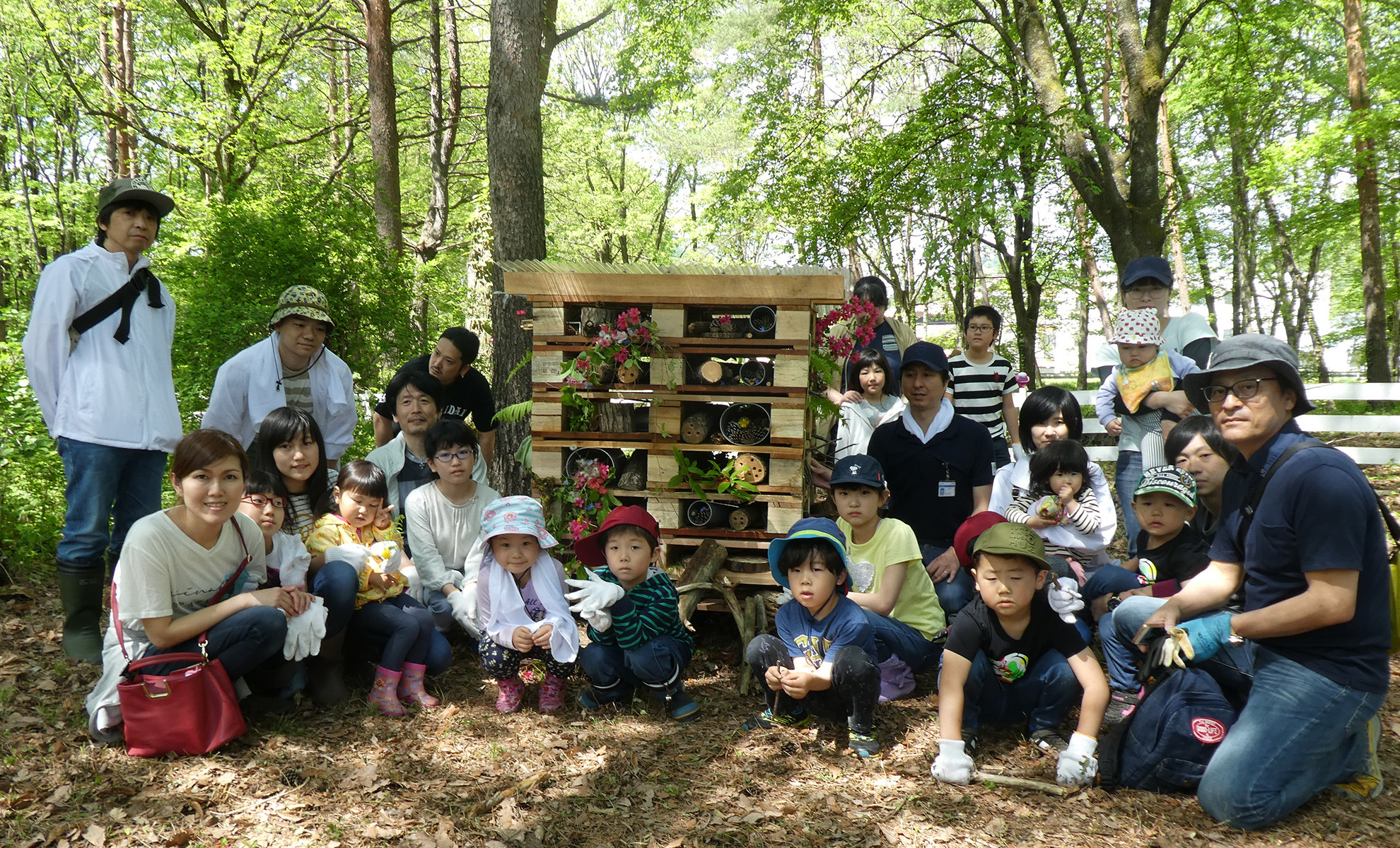
97 people including employees and their families participated in “The Green Wave 2019” *1 in May 2019. The weather is nice on the day. We standard green area maintenance activities such as picking branches from the green area, cutting ivy, pruning garden trees, deciding leaves *2, carry out creative activities such as making insect hotels*3 mainly for children, and did making flower beds and flower planting. We also conducted a "green space tour" to introduce the creatures and the highlights that inhabit the green space while interacting with the green. In addition to these activities, we participated in roadside cleanup activities around the region as part of the local environmental conservation activities.
We, together with the families of our employees, declared in the "MY Declaration of Action *4" promoted by the United Nations Decade on Biodiversity Japan Committee at the end of the day.
It was a day to experience the importance of biodiversity and green spaces.
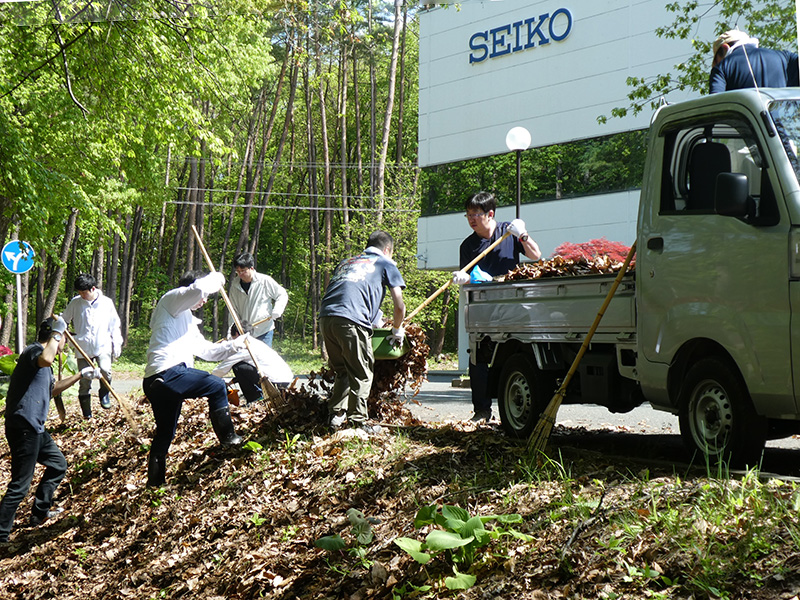
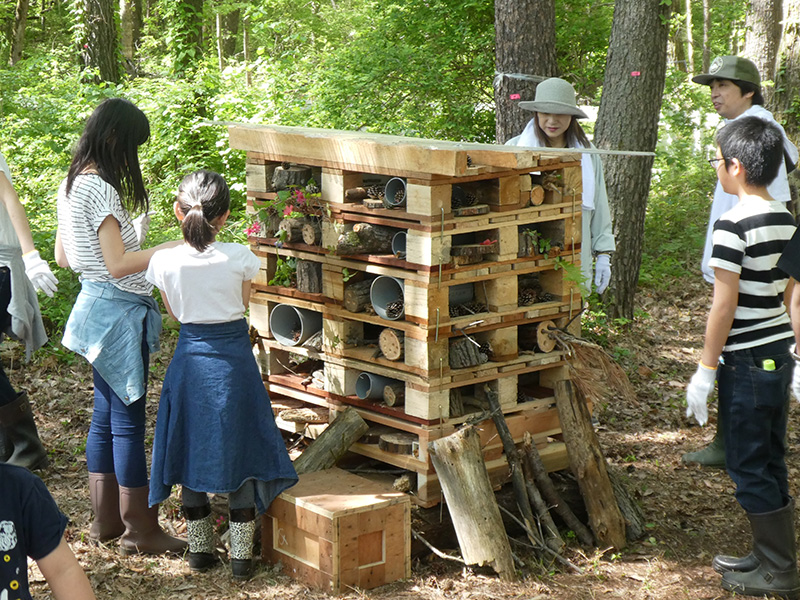
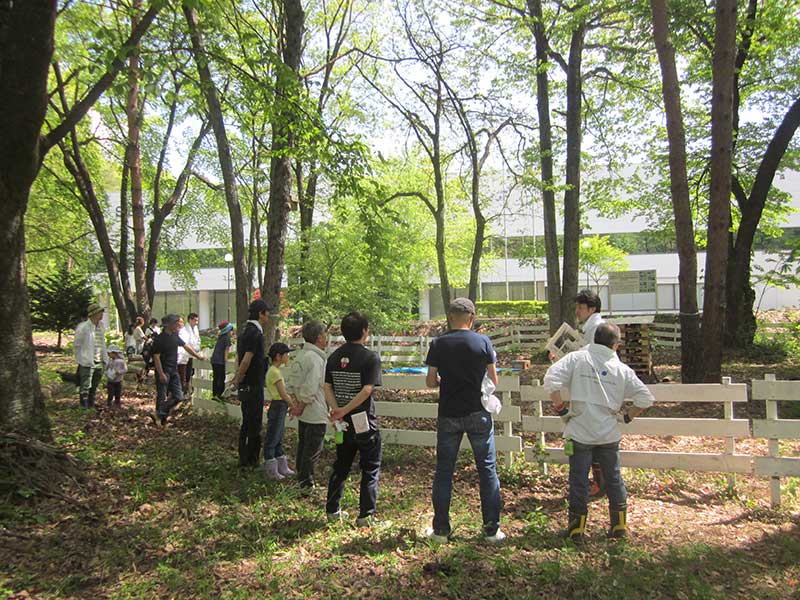
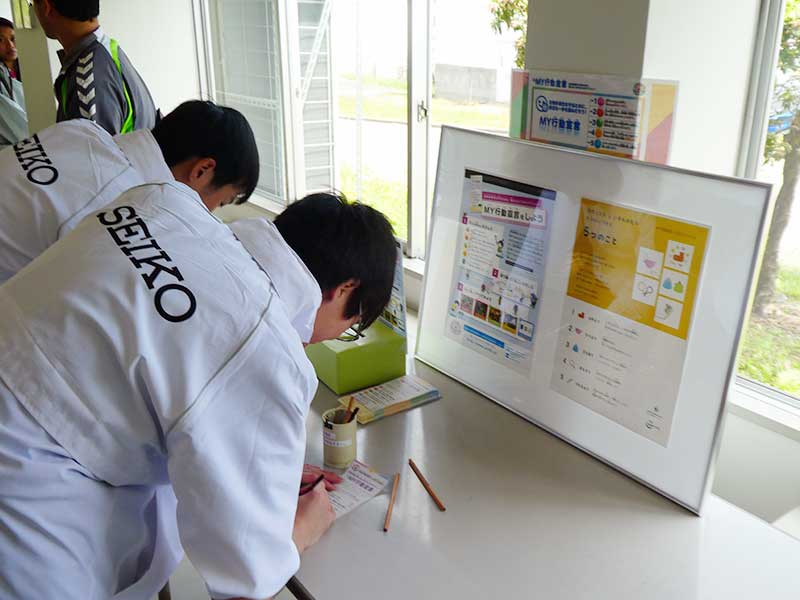
*1 The Green Wave https://greenwave.undb.jp/
Global activities such as planting trees and maintaining forests and trees on International Day for Biological Diversity, World Biodiversity Day (May 22) set by the United Nations. Activities in Japan are sponsored by the Ministry of the Environment, the Ministry of Agriculture, Forestry and Fisheries, and the implementation period is from March 1 to June 15.
*2 Deciduous leaves: Forest floor maintenance work that collects by scraping deciduous leaves at locations where too many deciduous leaves are blocking the germination of plants in the green space.
*3 Insect Hotel: Also known as “Mushi Hotel”. A hotel for insects that is made mainly of natural materials such as plants and trees and attracts a wide variety of insects.
*4 MY Action Declaration https://undb.jp/action/
Five Action Declarations to protect biodiversity promoted by the Japan committee for UNDB. We aim for each person to understand the relationship with biodiversity in their daily lives, to experience it, and to act from a familiar location.
2018Aug
August 2018: We surveyed animals that live in green spaces.
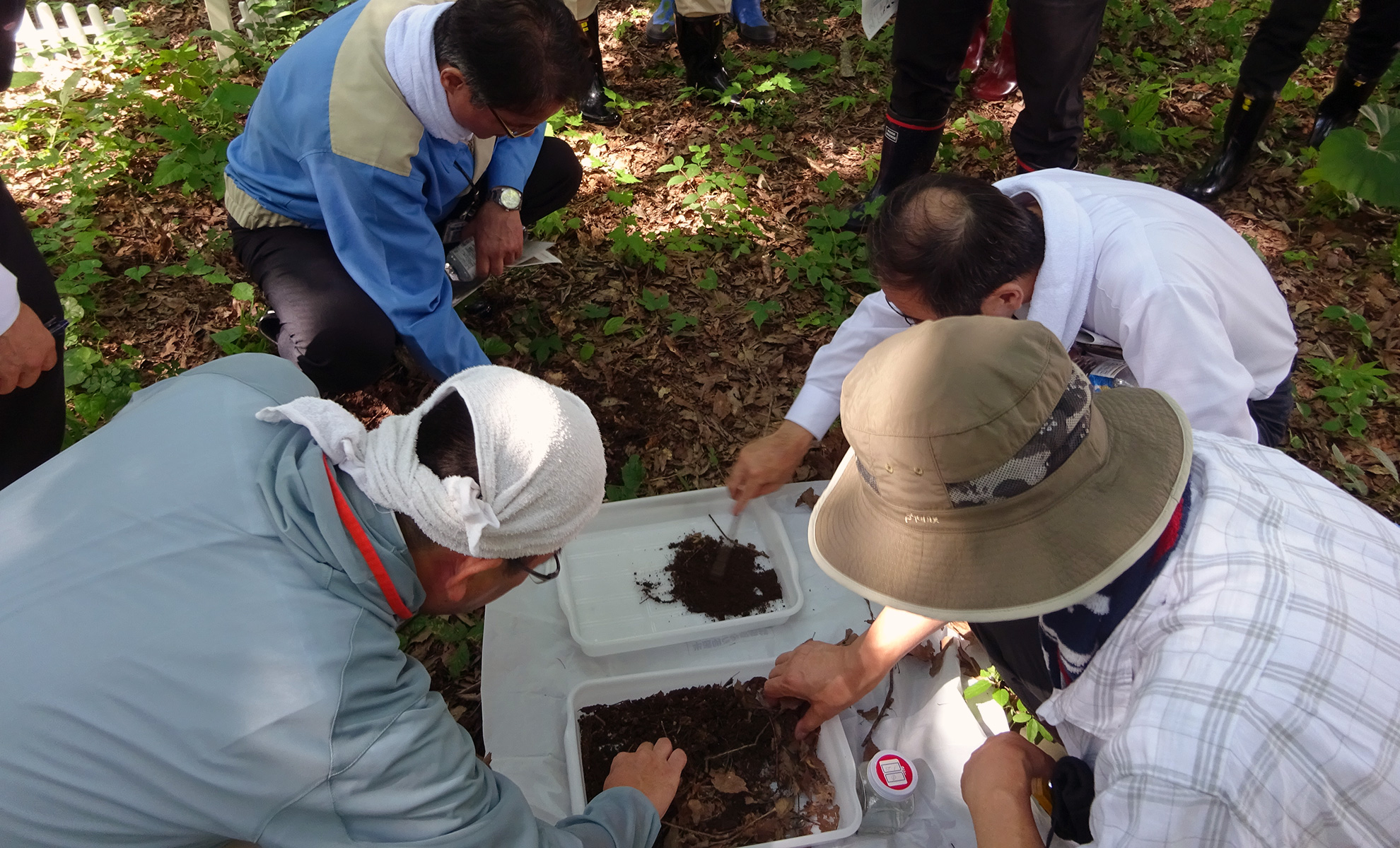
It was held for the first time in the summer. We conducted a biological survey of soil animals and other mammals in this nature observation meeting. We installed a camera (automatic shooting) for field biological research and a pitfall trap * for soil biological research in the preliminary survey in July. They explained the role of soil animals and the judgment of the naturalness of green tracts based on collected soil animals at the Nature Observation Meeting in August.
They also checked the animals contained in the camera, and enjoyed watching insects while strolling in green spaces.
The day of the nature observation party was a very hot day, but the forest area in the green area felt very cool and we realized the power of the forest.
*Pit fall trap method
A method of installing a trap on the forest floor and collecting animals that fell there
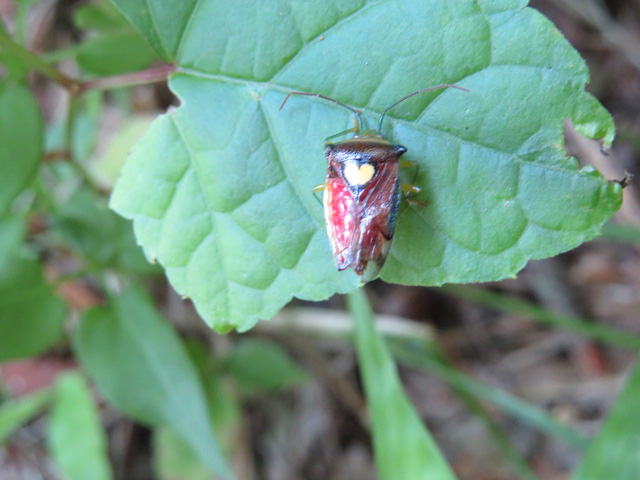
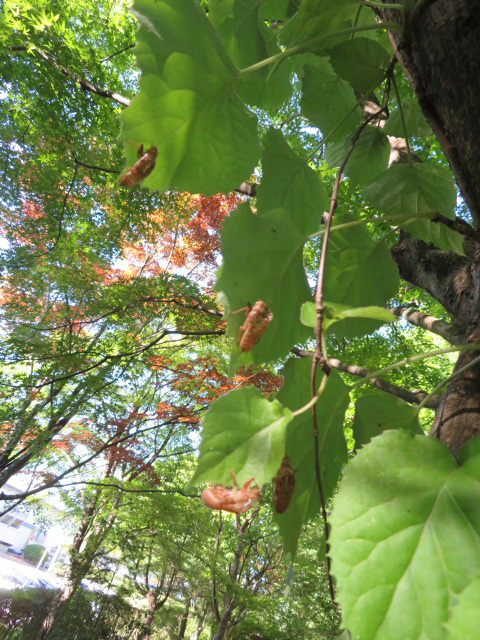
2018Jun
June 2018: We participated in The Green Wave 2018.
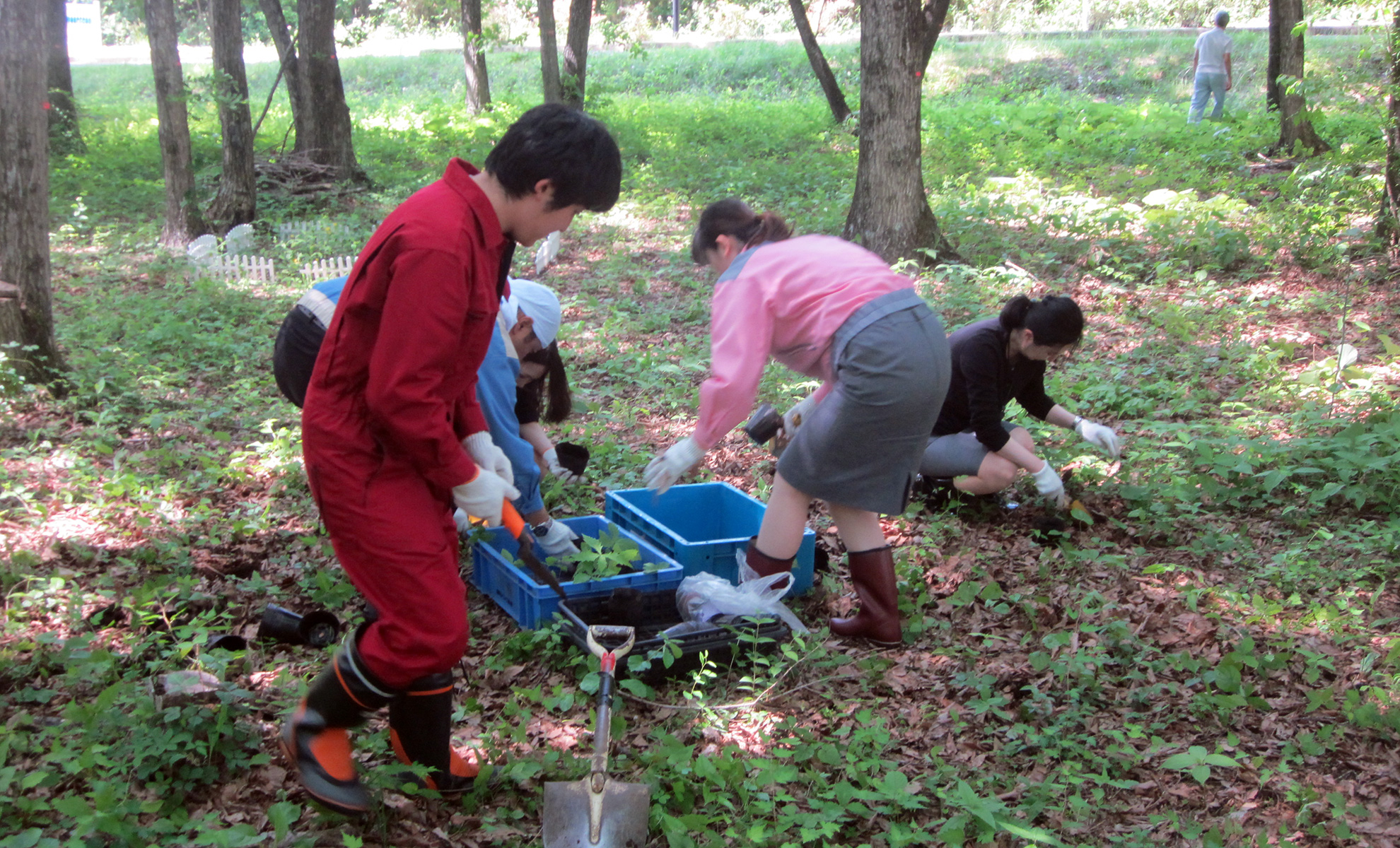
We participated in “The Green Wave* 2018” to maintain green spaces in June 2018. We stepped up a from last year's activities, making small oak pots, removing vines wrapped around the trees, and accumulating fallen tree branches as usual. Many seedlings (plants that germinated from seeds) were found in the growing area of small oak made last year at The Green Wave. We wished to grow bigger sooner, and we moved the seedlings into potted plants and moved to sunny locations this time.
*The Green Wave https://greenwave.undb.jp/
A global-scale activity to plant trees and maintain forests and trees on the International Day of Biodiversity (May 22) set by the United Nations. Activities in Japan are advocated by the Ministry of the Environment and the Ministry of Agriculture, Forestry and Fisheries, and are scheduled to run from March 1 to June 15.
2018Jan
January 2018: ABINC certification was updated.
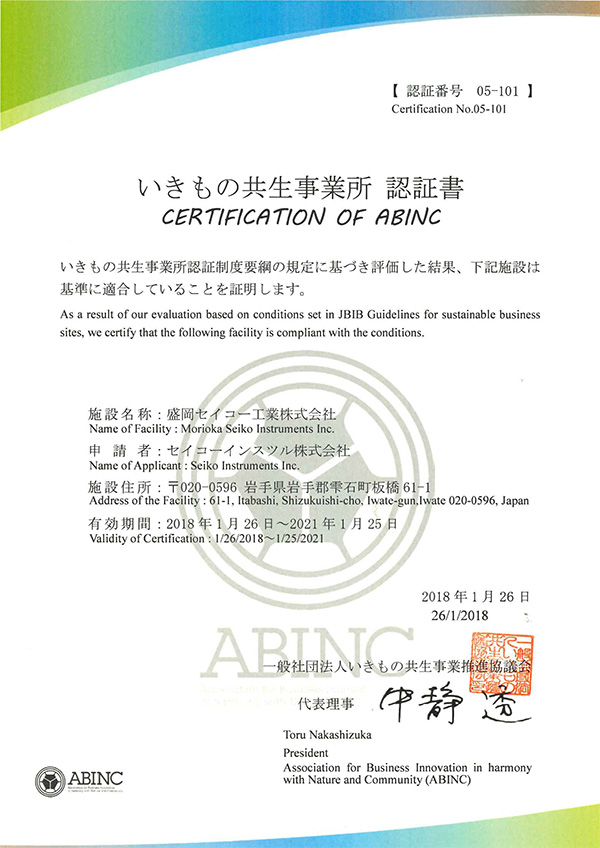
2017Oct
October 2017: A tree survey was conducted.
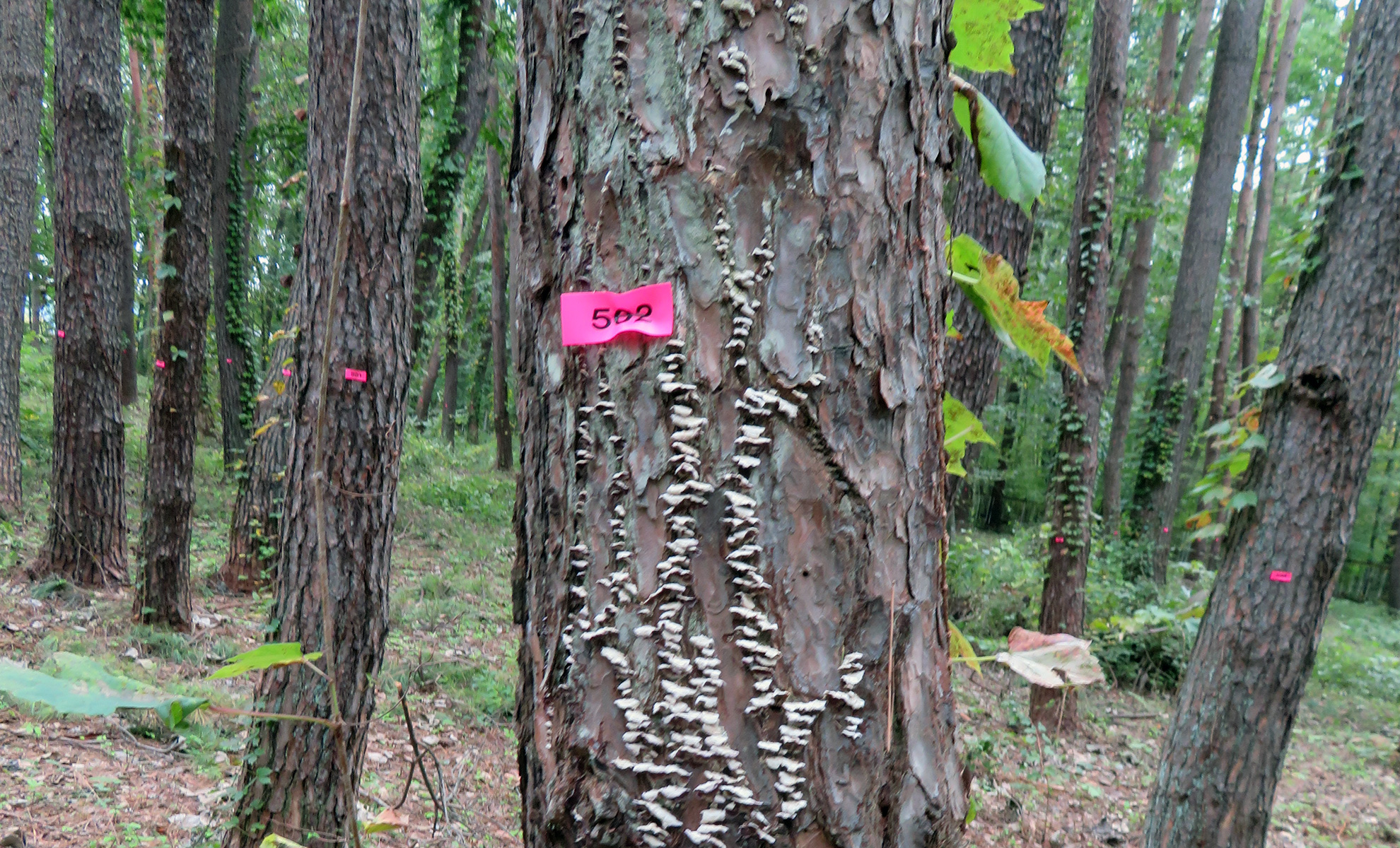
In order to maintain this green space sustainably, how do we manage it? In order to clarify the direction, we conducted a tree survey in September under the guidance of experts to measure the diameter and height of the chest height while numbering each tree individually. We created a "tree ledger" that added the species and health of the trees to the measurement results, and were able to grasp the growth status of each tree. Based on each tree survey, we received advice on cutting down dead trees and growing succeeding trees while looking at actual trees at the nature observation meeting in October. Also, at a nature observation event, a mini project entitled "Let's Find Three Autumns!" And searched for mushrooms, nuts, and autumn leaves. And We found a rare species, Calanthe discolor! Calanthe discoloris listed on the Iwate Prefecture Red List as rank B (an endangered species).
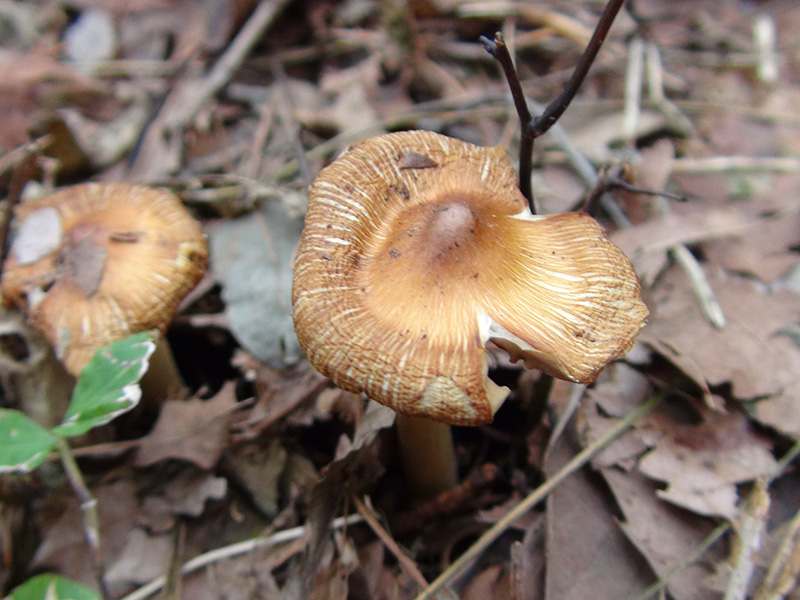
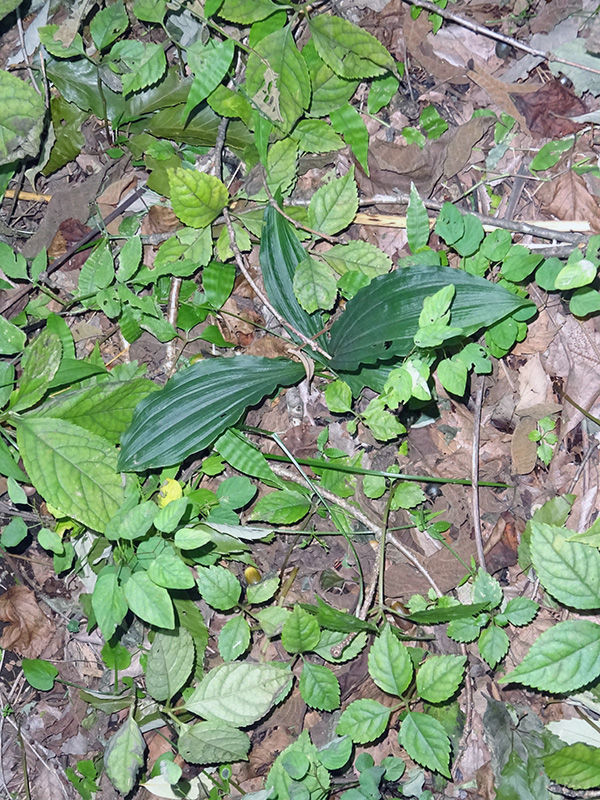
2017Jun
June 2017: We participated in The Green Wave 2017.
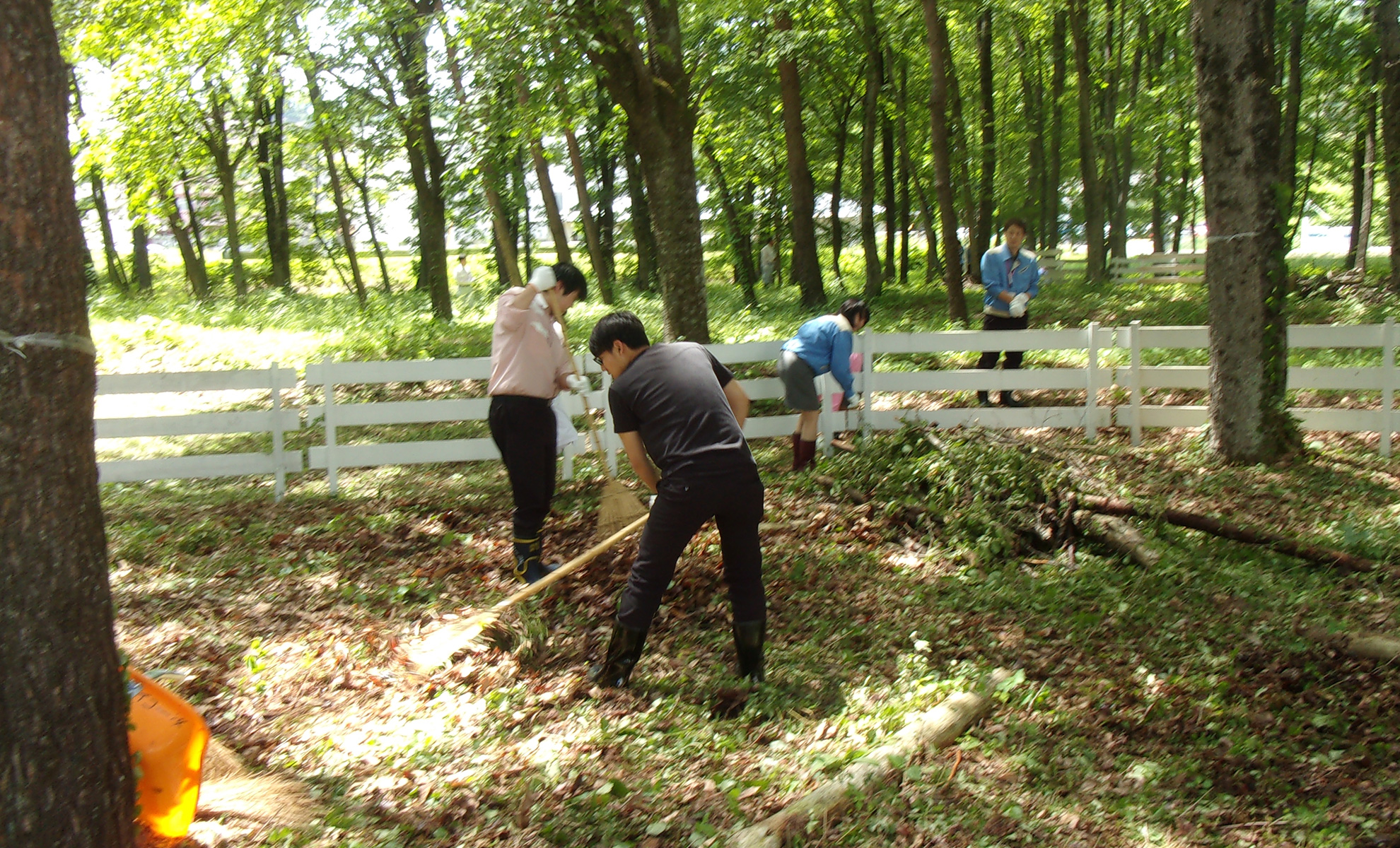
We participated in “The Green Wave *2017” and improved the green space In June 2017. The group was divided into two groups, working to create a habitat for small creatures by accumulating tree branches and fallen leaves that fell due to wind and snow, and to create a growing area for seedlings of native Quercus in green tracts of land on that day. Although the initial activities were postponed due to rainy weather and became small-scale activities, we were able to contribute to “The Green Wave”
* The Green Wave https://greenwave.undb.jp/
A global-scale activity to plant trees and maintain forests and trees on the International Day of Biodiversity (May 22) set by the United Nations. Activities in Japan are advocated by the Ministry of the Environment and the Ministry of Agriculture, Forestry and Fisheries, and are scheduled to run from March 1 to June 15.
2016Oct
October 2016: We received a special award at the "ABINC Award" established by ABINC.
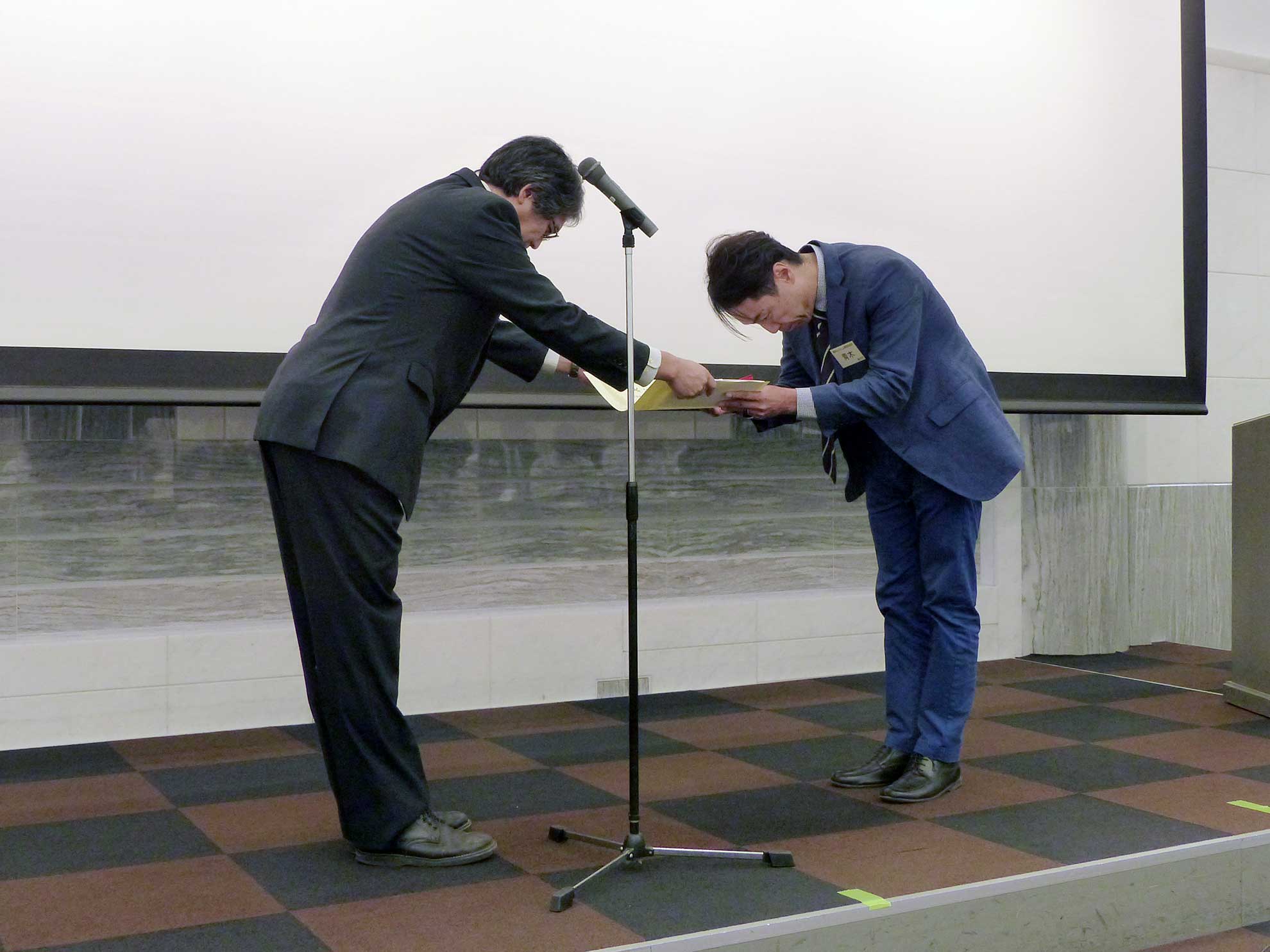
We were awarded a special prize in the award system "ABINC Award", which was established by the Association for business innovation in harmony with nature and community (ABINC) in October 2016. This award is given to facilities that have achieved ABINC certification and that have a high degree of contribution to ABINC promotion and biodiversity mainstreaming. The commendation was highly praised for their excellent communication, such as the maintenance of green spaces by their own hands, including their families, and the introduction of biodiversity conservation initiatives to local people.
https://www.sii.co.jp/eco/pickup/abinc.html
2016May
May 2016: A nature observation party was held to look for spring plants.
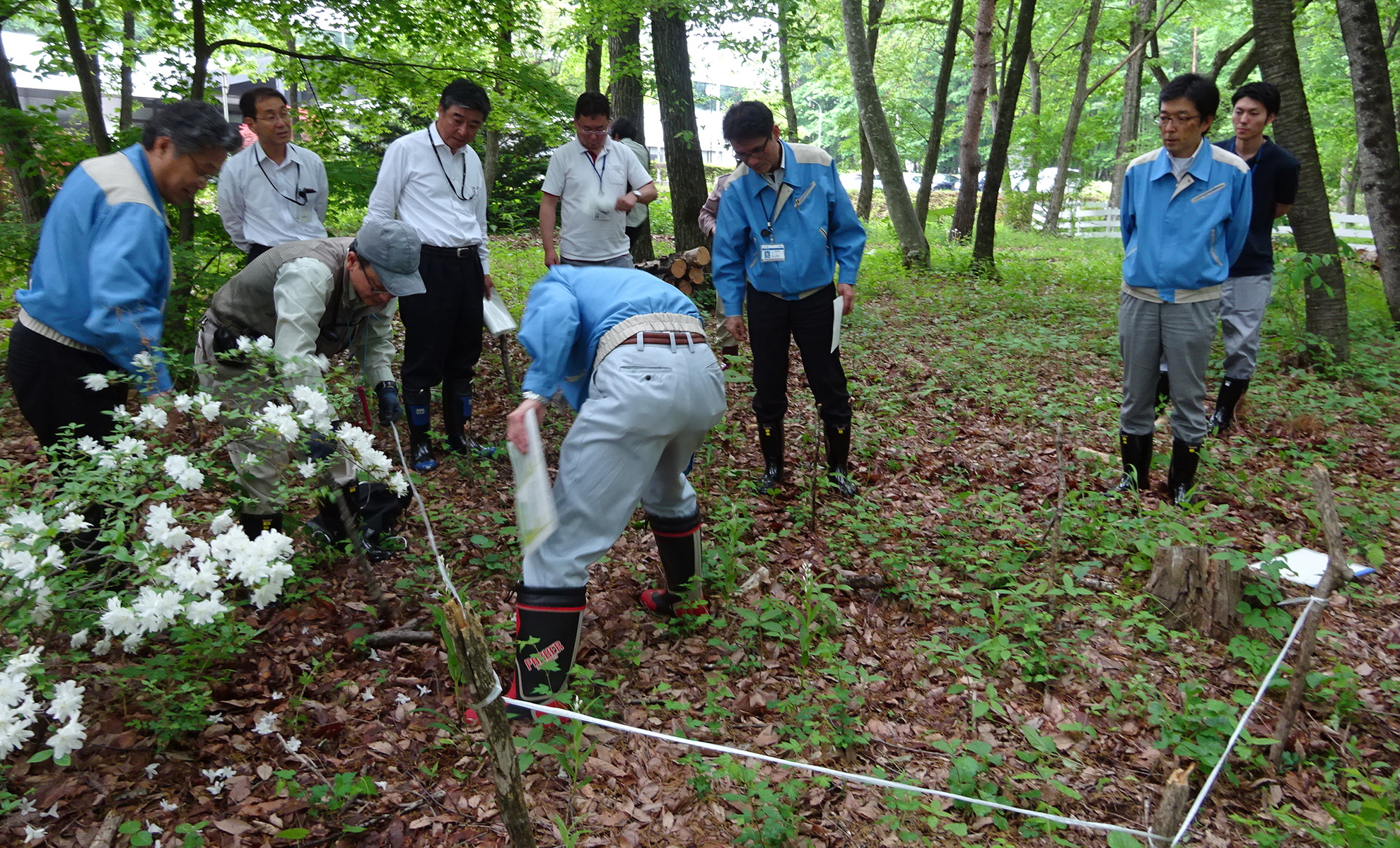
The first spring event was held, and the vegetation survey was conducted for the first time in green spaces. Plants that favor bright forest floors, such as Anemone pseudoaltaica and Viola grypoceras were confirmed. Experts advised that "These plants are indicators of the proper management of green spaces. It is good to keep watching them in the future." The habitat was clearly marked with ropes, and it became a catalyst for the visualization of green spaces to make it easier to observe these plants.
Anemone pseudoaltaica was called "spring ephemeral (spring fairy)", and explained the plants that serve as indicators, such as the fact that flowers bloom only during the early spring. The flowers had already blossomed at the time of the nature observation meeting, but we could see the blooming flowers in the following year.
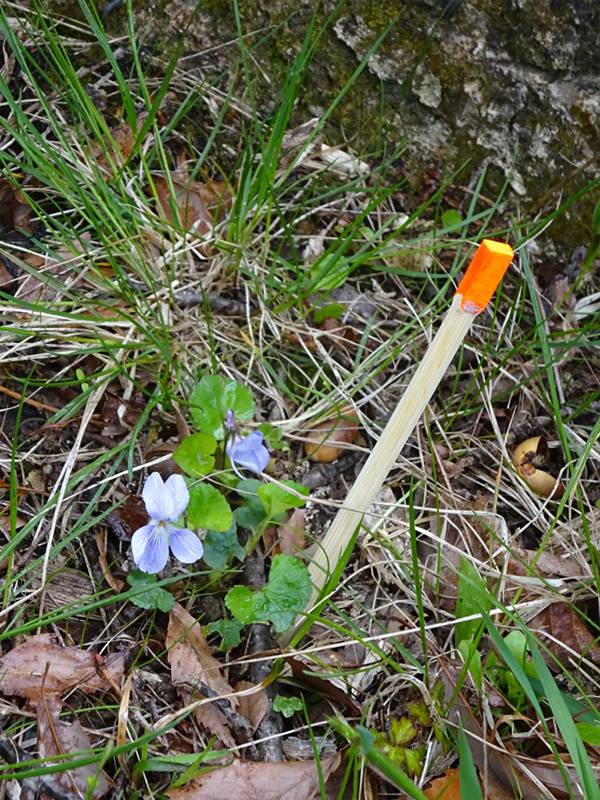
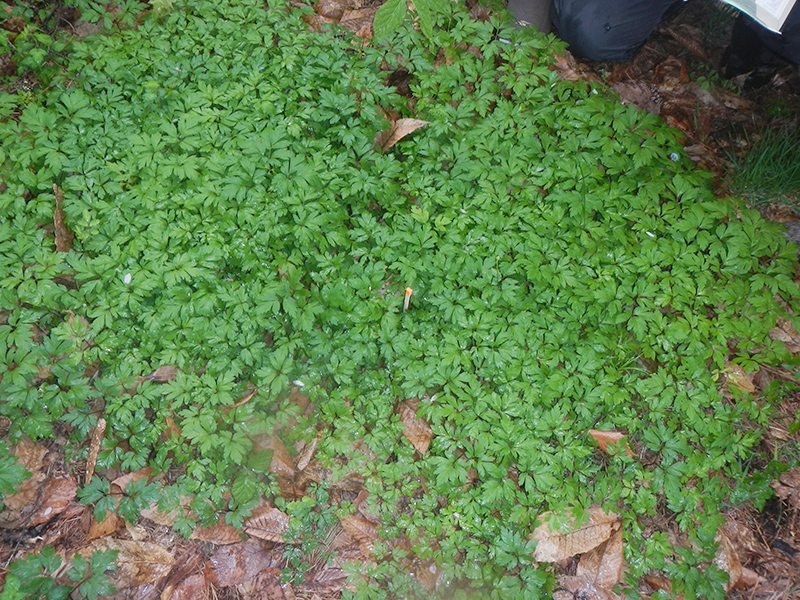
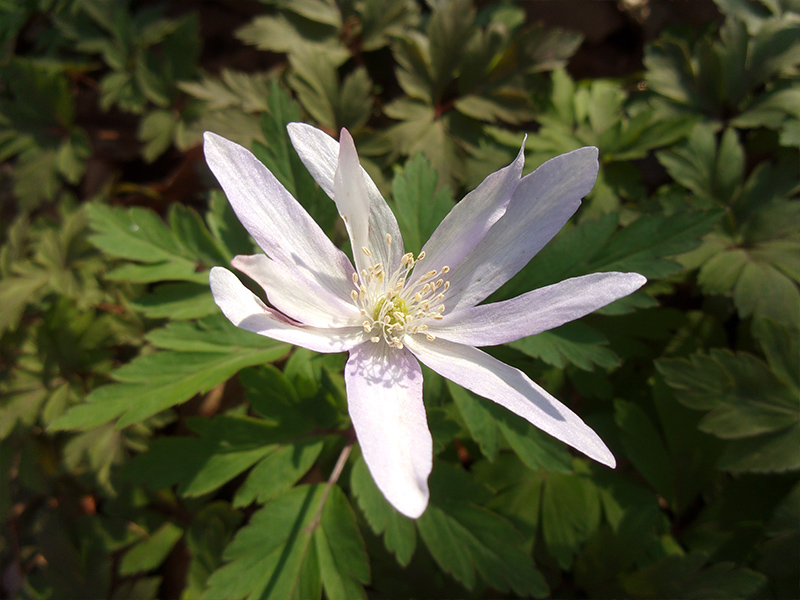
2015Oct
October 2015: A nature observation event was held while incorporating nature games.
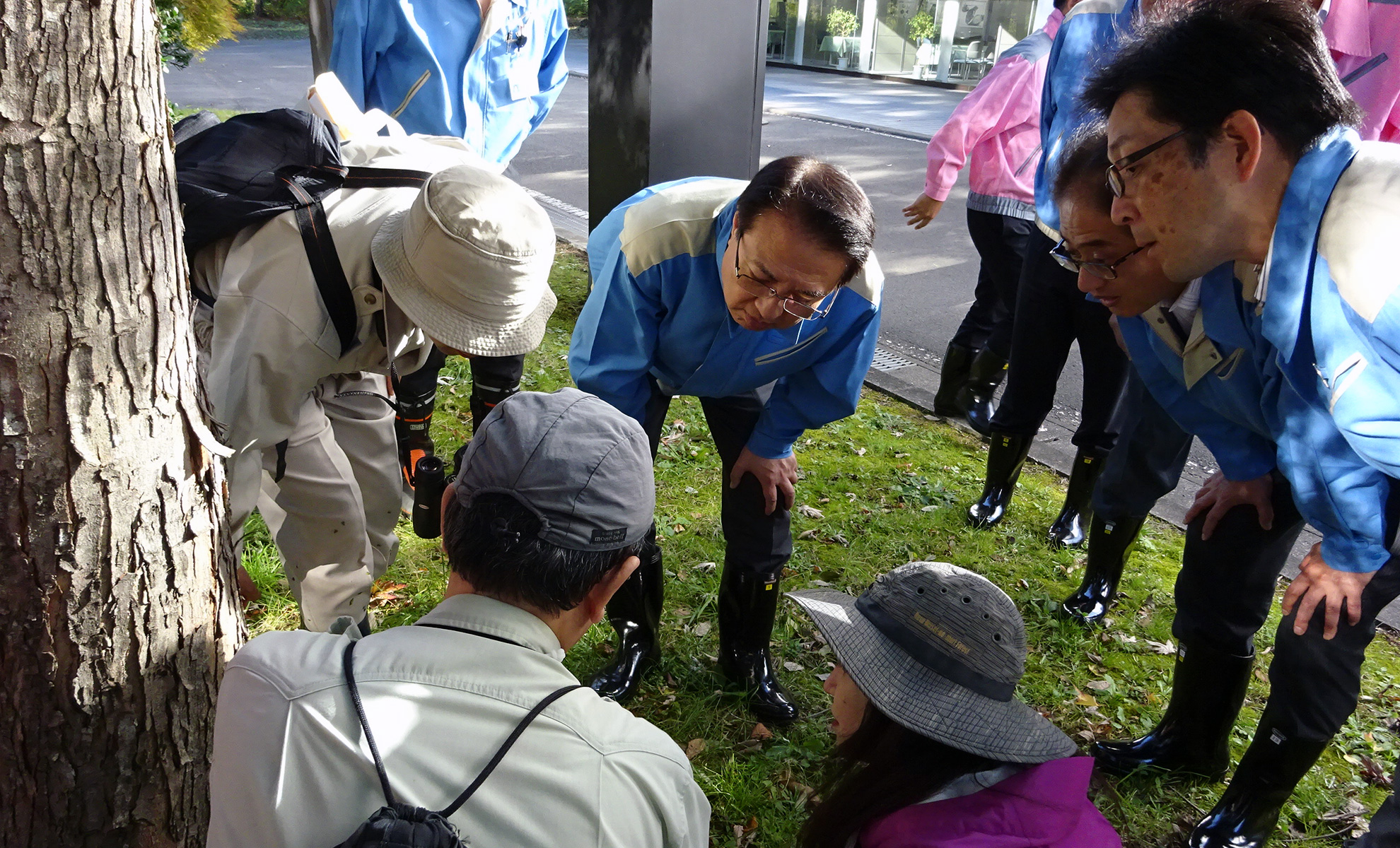
We have shifted from the evaluation of green spaces and surveys of creatures to a “nature observation meeting” with a theme. We invited experts to give a lecture on the theme of "environmental education and biodiversity," and we reaffirmed the importance of environmental education. At the nature observation meeting, we learned about the relationship between acorns and animals, the relationship between tree holes and woodpeckers, as well as the habitats, habits and ecology of green spaces.
All the participants enjoyed and searched for the colors presented by the leaders in the “Natural Color Search” that incorporates the elements of nature games.
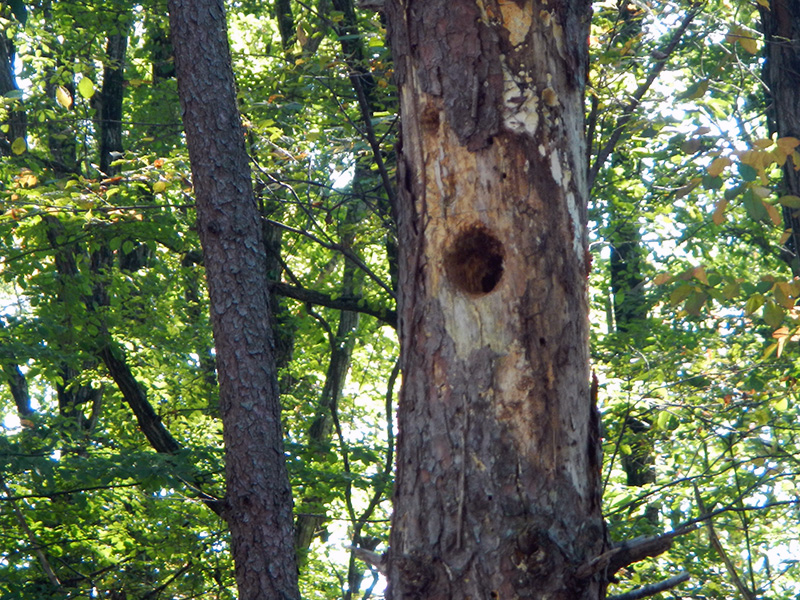
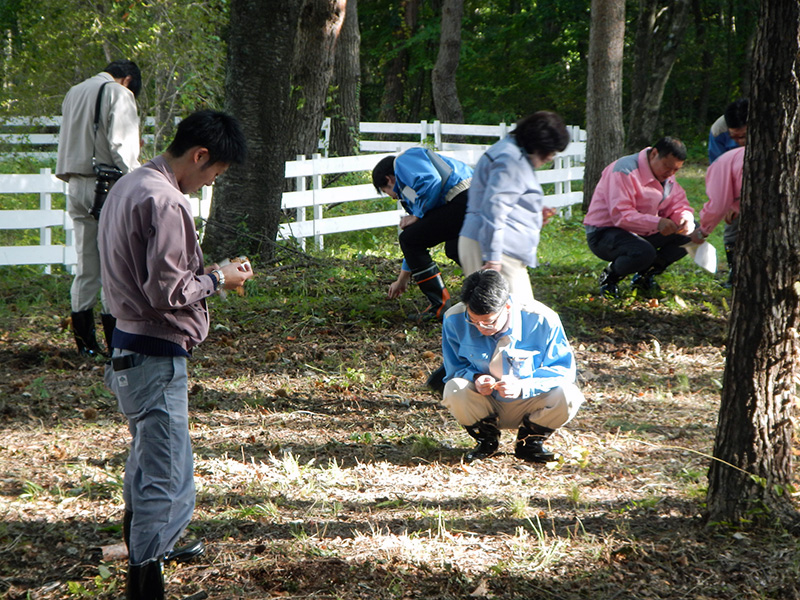
2015Feb
February 2015: ABINC certification was obtained.
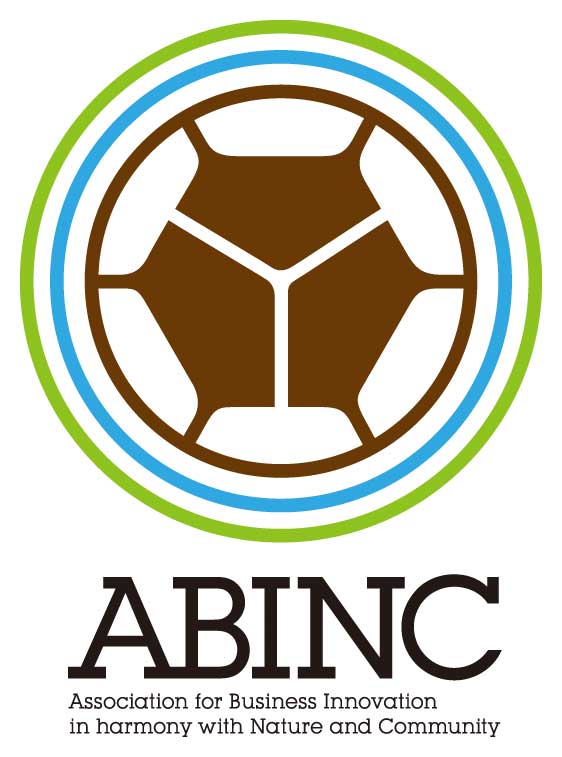
The company has acquired the first factory version of the “Association for business innovation in harmony with nature and community Certification” (ABINC certification). The certification system operated by the Association for business innovation in harmony with nature and community (abbreviated as ABINC). !
The ABINC certification system is based on the “Association for business innovation in harmony with nature and community Promotion Guidelines” developed by JBIB, and ABINC evaluates and certifies facilities working on green space development that considers biodiversity on a third-party basis.
https://www.sii.co.jp/jp/news/release/2015/02/26/11617/
2014
Main activities in 2014: We investigated alien plants.
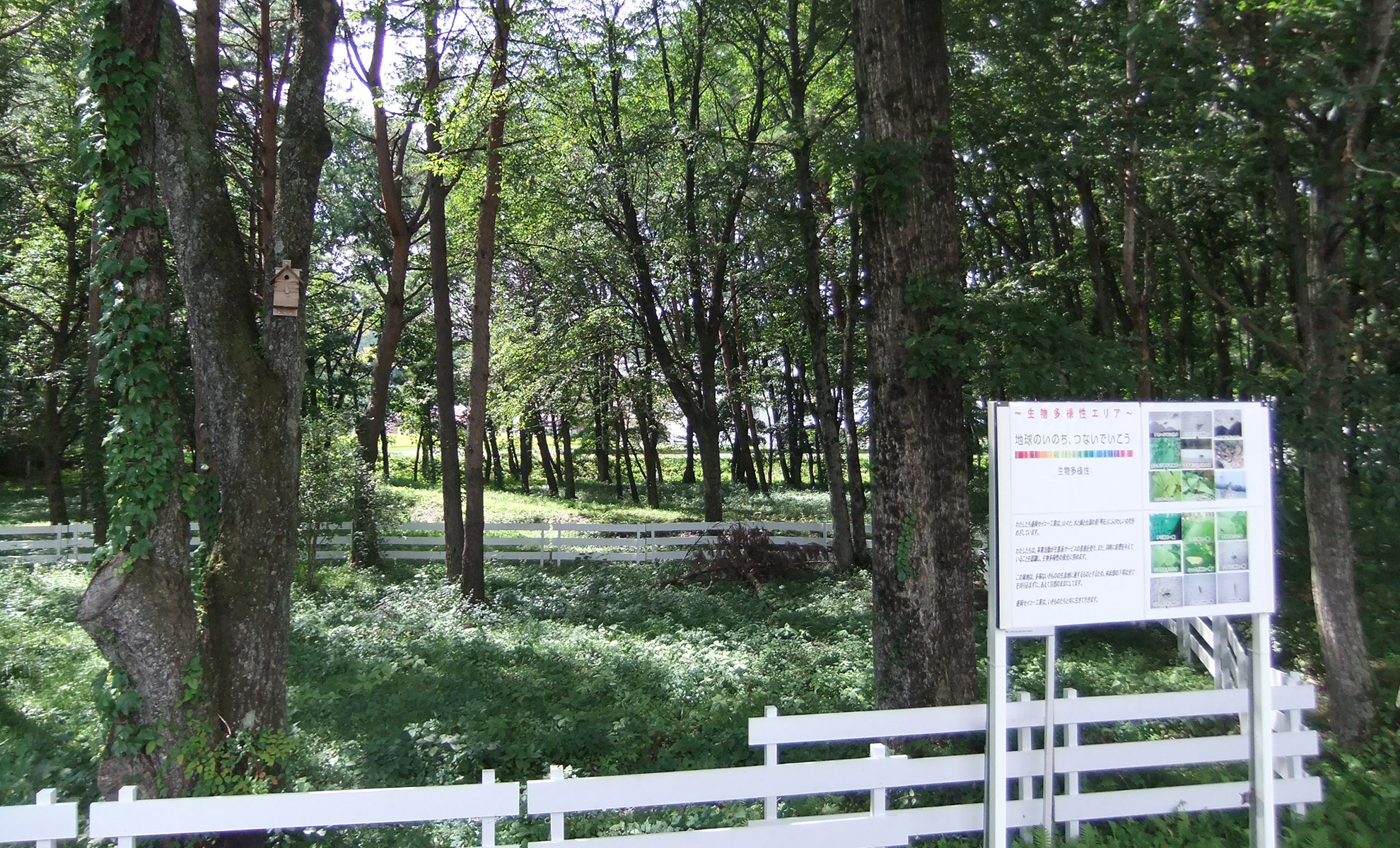
Employees and their families set up a biodiversity conservation area in a green space, and installed signs to introduce activities in the spring of June 2014. We also have a tour of the “Environmental debriefing with the community*” and are working to understand and disseminate biodiversity conservation to the region by introducing activities.
We conducted a third evaluation of green spaces using the Land Use Report and conducted a survey of creatures in September 2014. In addition, we received guidance from experts on exotic plants and how to identify them, and investigated whether exotic plants inhabit green spaces. Several alien species have been discovered, but no specific alien species have been identified that are strictly regulated by law. Taking this opportunity, we continue to eliminate alien plants in our environmental activities in spring and autumn. The creature survey confirmed many creatures such as tree frogs, dragonflies, and cicadas.
*"Environmental debriefing with the community"
A report session inviting local residents and government officials to report on environmental activities and tour factories and environmental facilities. It has been implemented since 2008.
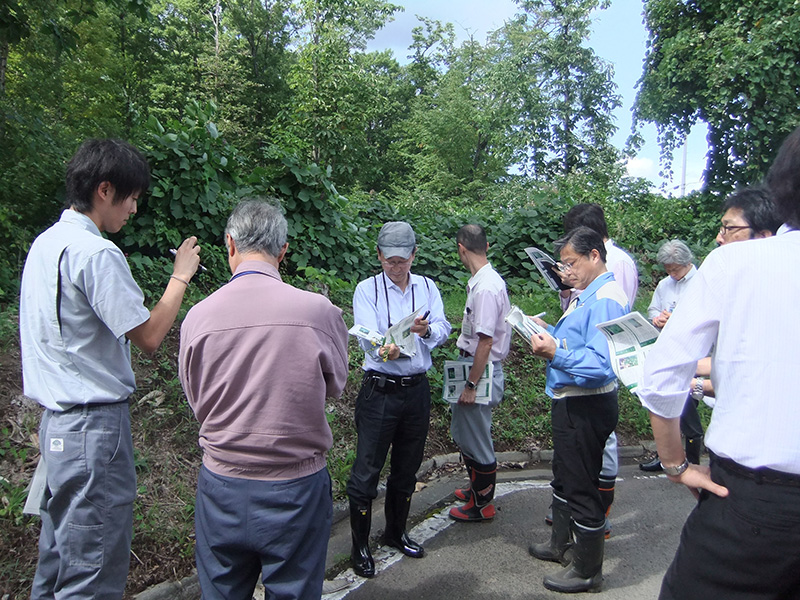
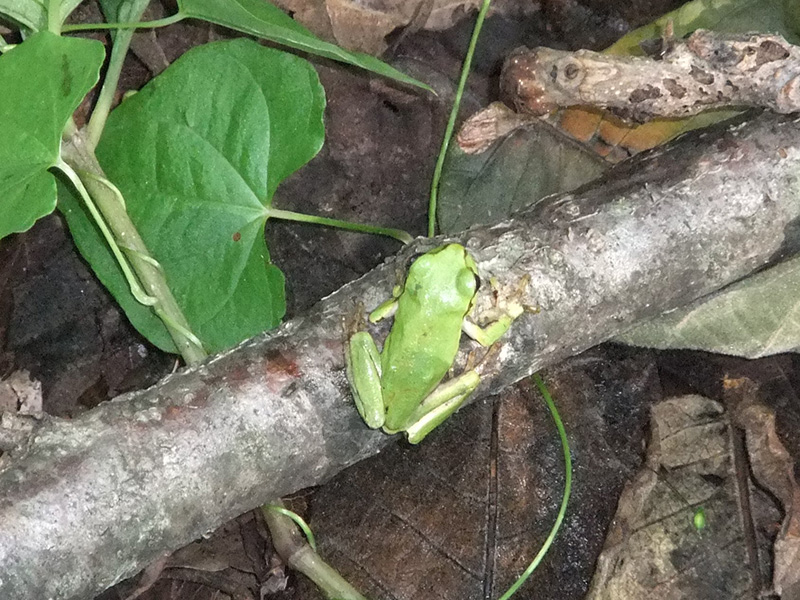
2013
Main activities in 2013: The second report was added.
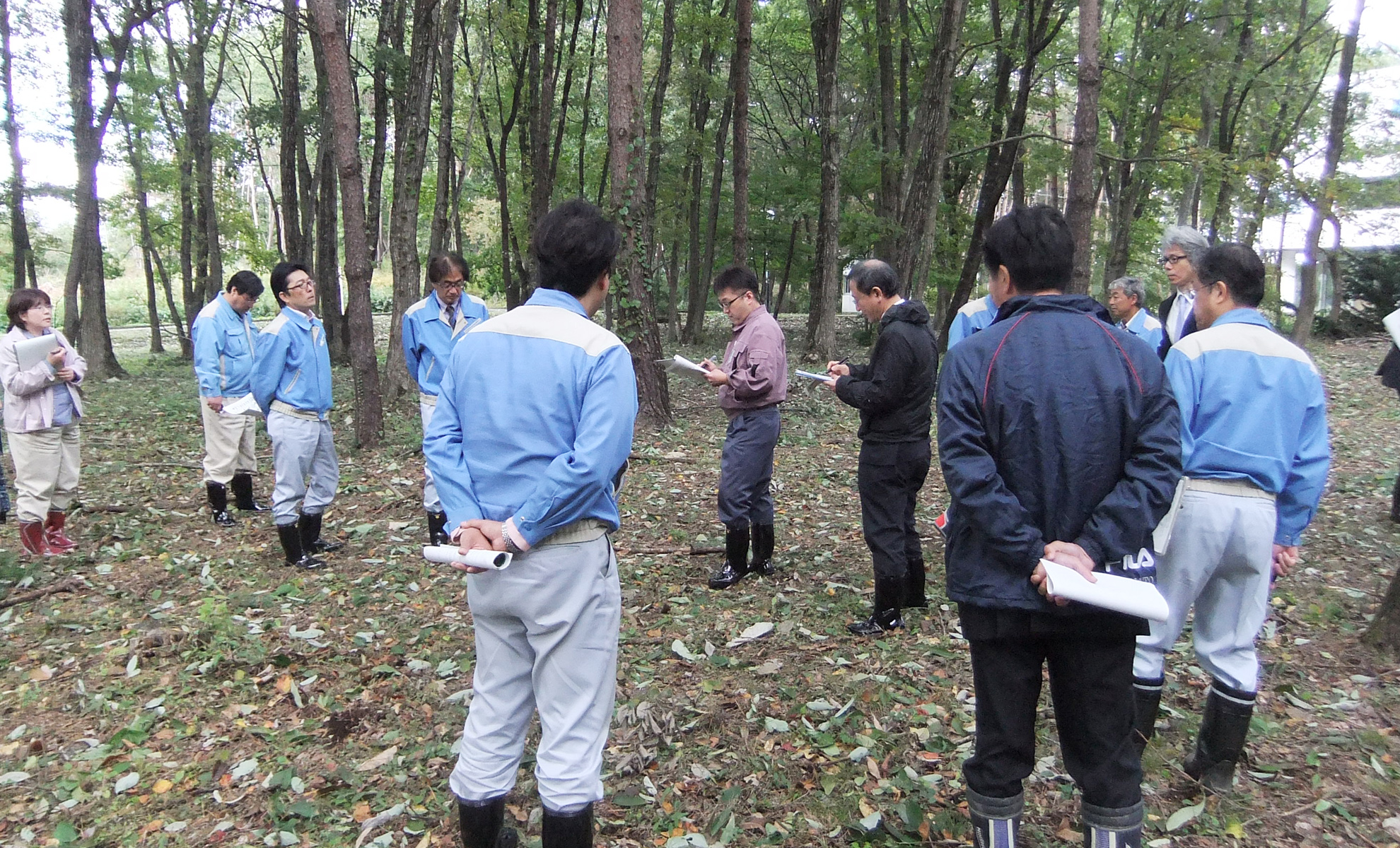
We did not overcut green undergrowth so that we could have different levels of green following last year's advice. In addition, we accumulated branches and fallen leaves to create a habitat for creatures. Employees and their families created birdhouses to be installed in green spaces in the spring of June 2013.
In October 2013, as in the previous year, we conducted evaluations of green spaces using the Land Use Report and conducted a survey of creatures. The score in the report book improved, but they gave us the advice, "The undergrowth is still too much cut. It would be nice to leave more green."
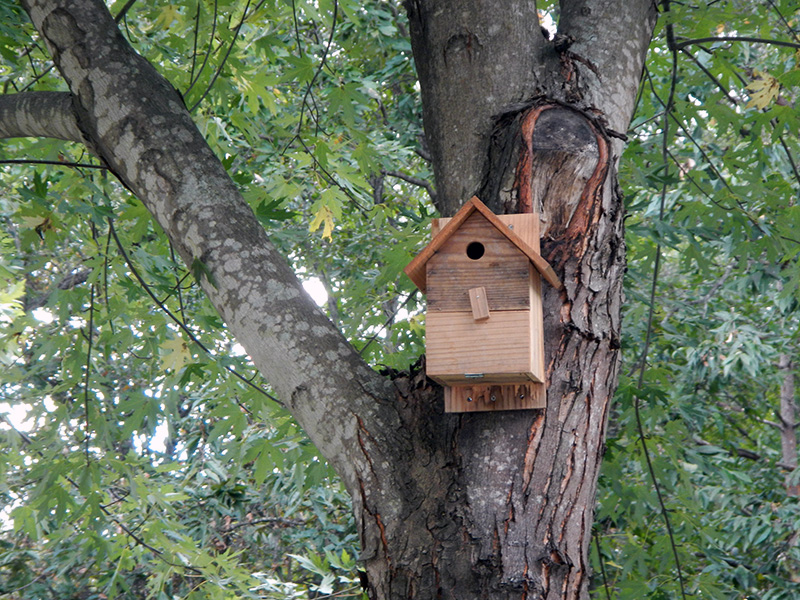
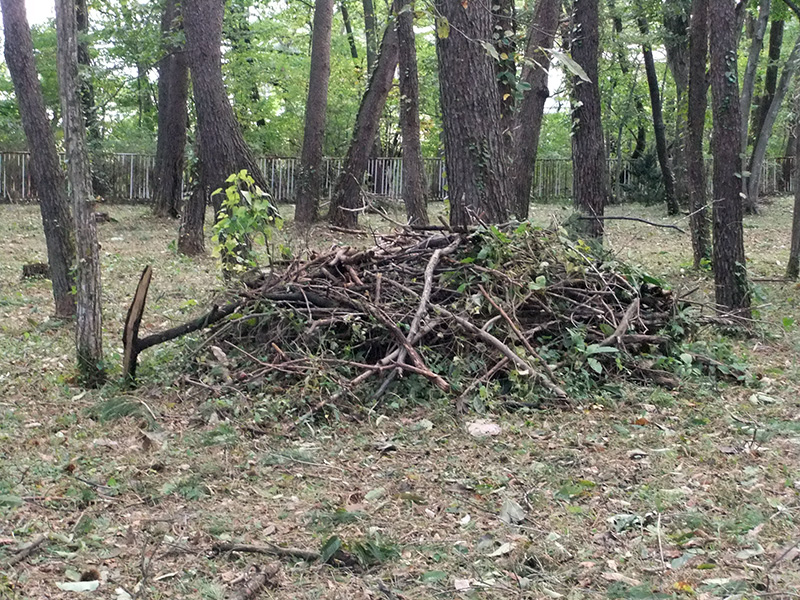
2012
Main activities in 2012: The first report on green space was turned in.
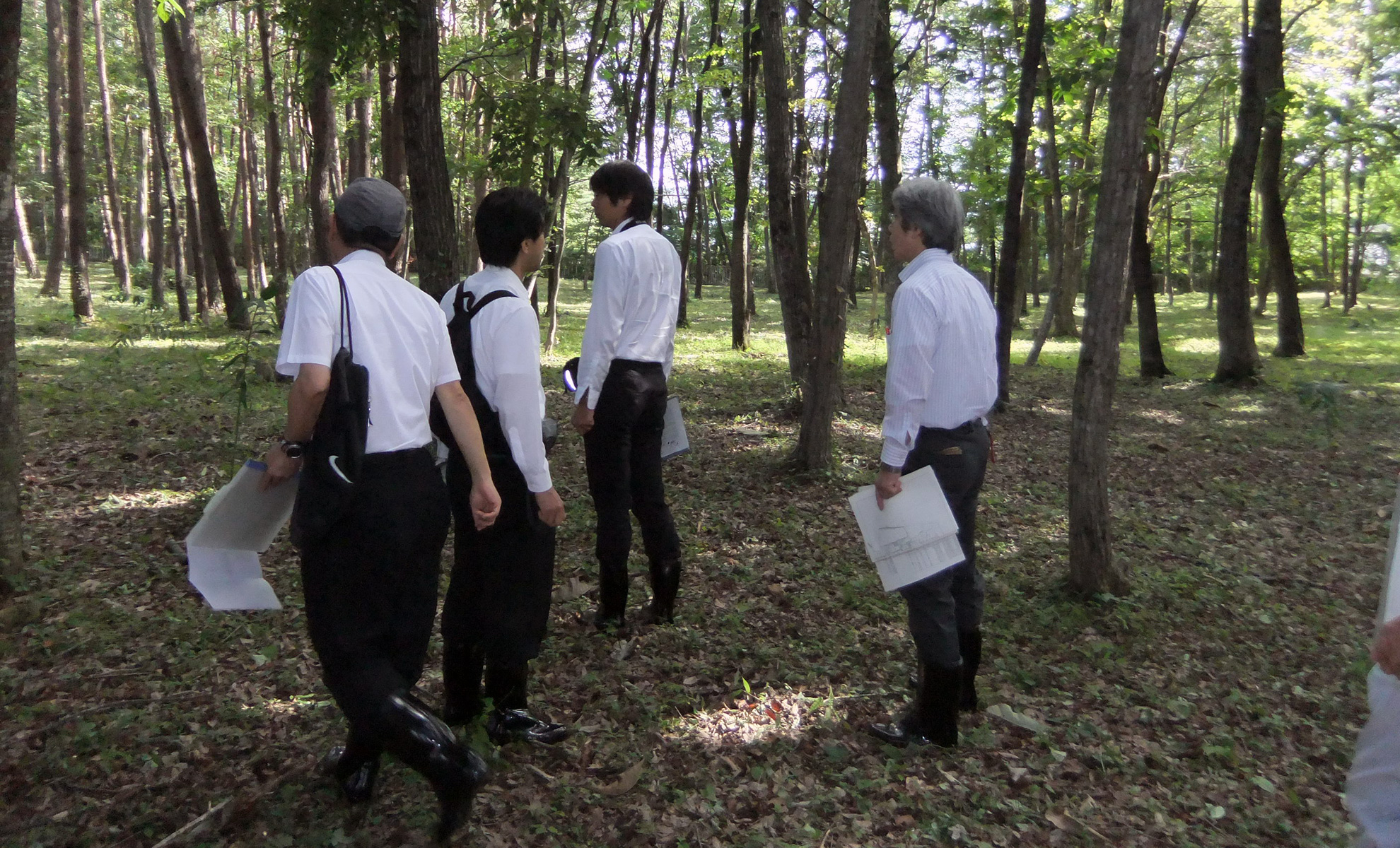
In September 2012 we invited external experts to our land together with the Environmental Division of SII's headquarters, Morioka Seiko's green space was evaluated from the perspective of biodiversity using the “Land Use Report” issued by JBIB *.
Experts advised that there should be more layers of green, leaving green undergrowth without cutting too much.
At the same time, we conducted a survey of creatures that live in the green areas, and found things like a shrimp flies and squirrel strainers.
* JBIB: Japan Business Initiative for Biodiversity
A group of companies that are conducting advanced and proactive initiatives in biodiversity conservation through business. They are developing the “Ikimono Symbiosis Office Promotion Guidelines” and the “Land Use Report”.
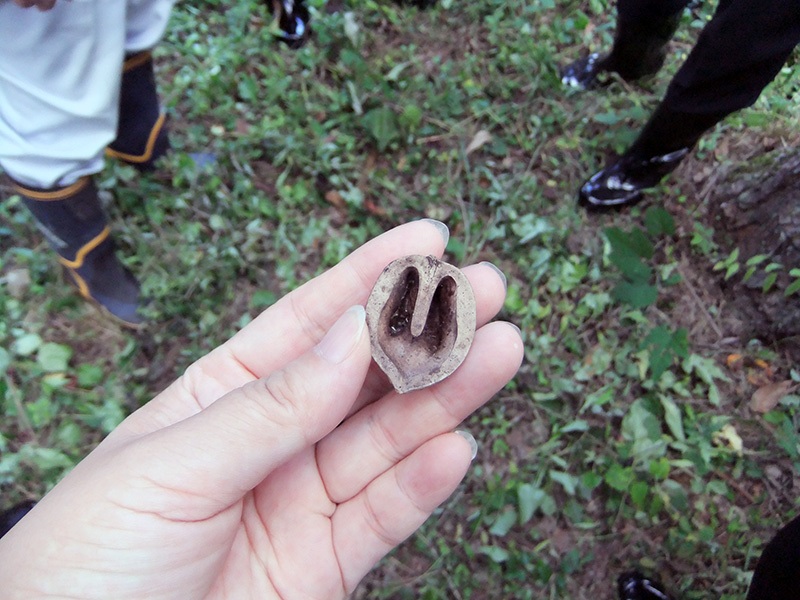
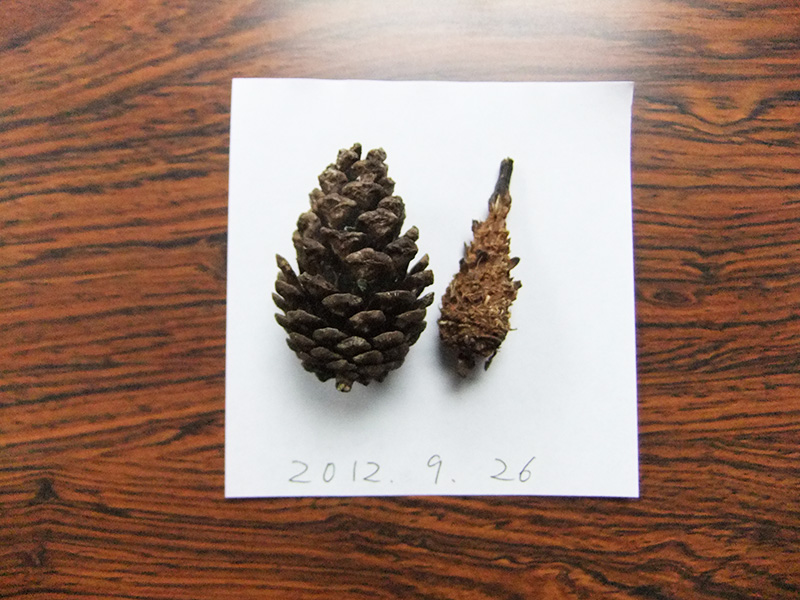
2011
SII enacted the “SII Group Biodiversity Action Agenda” in April 2011.*
Morioka Seiko is decided to working on biodiversity conservation, recognizing that business activities need to benefit the ecosystem not adversely affect them.
Examining the structure of Morioka Seiko's green space, it can be confirmed that it has forests that existed before the company was established and has a high degree of naturalness. This is an important point for preserving biodiversity when viewed over a wide area. We aim to create a green space like Satoyama while creating a green space that takes into account even more biodiversity.
*Morioka Seiko was a member of Seiko Instruments Inc. (SII) until March 31, 2020.